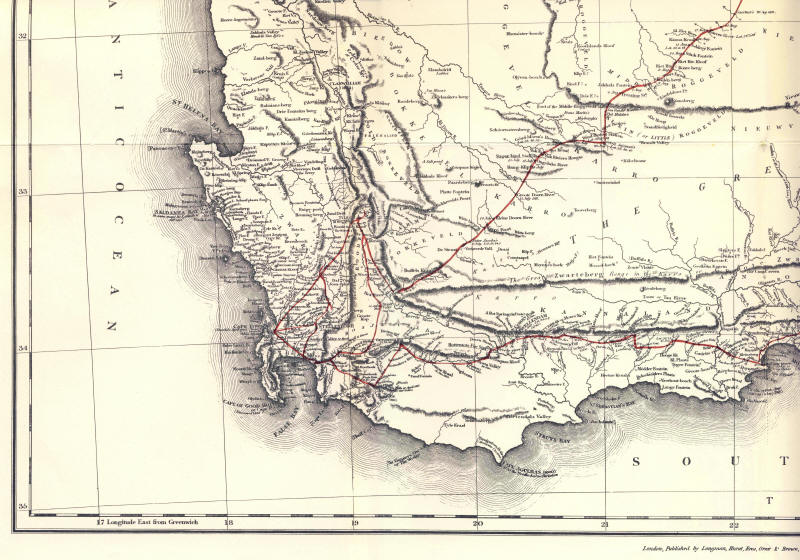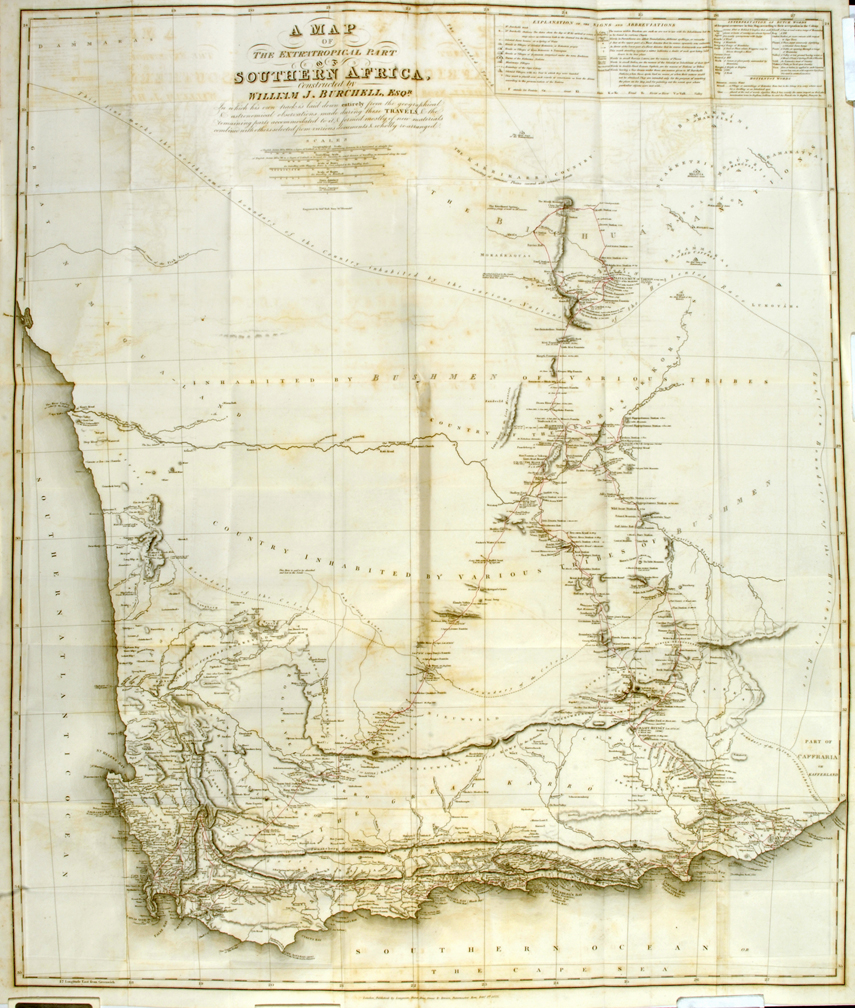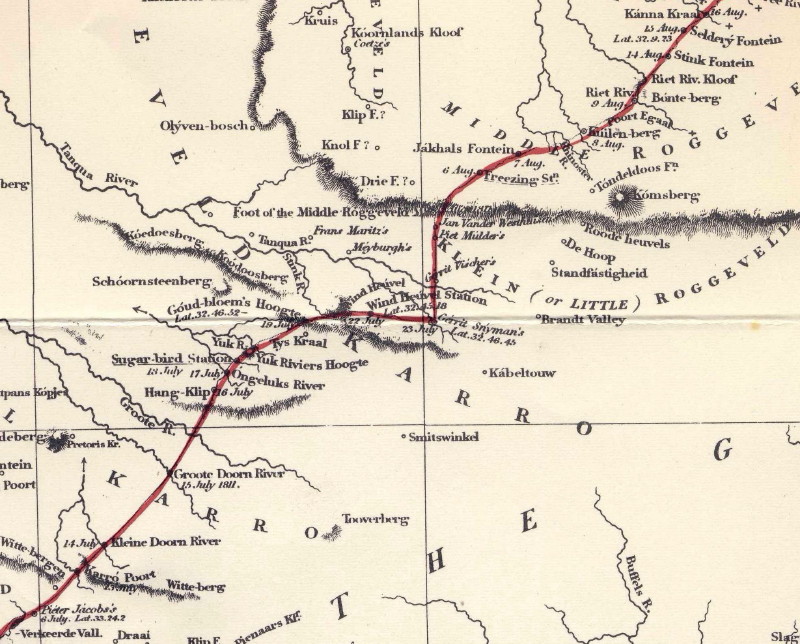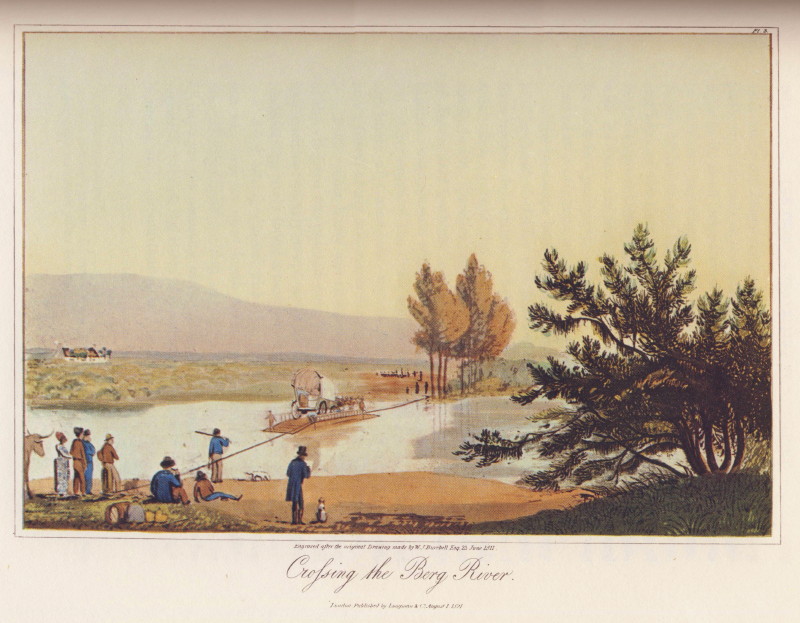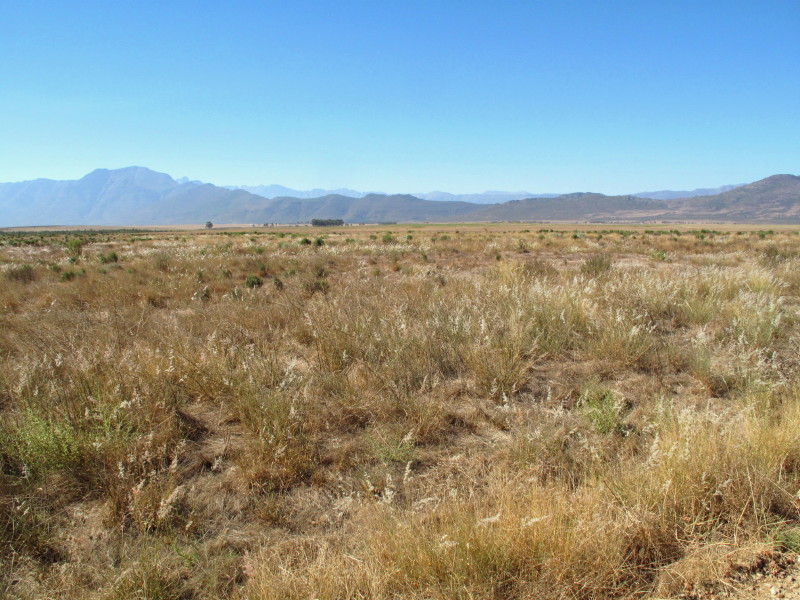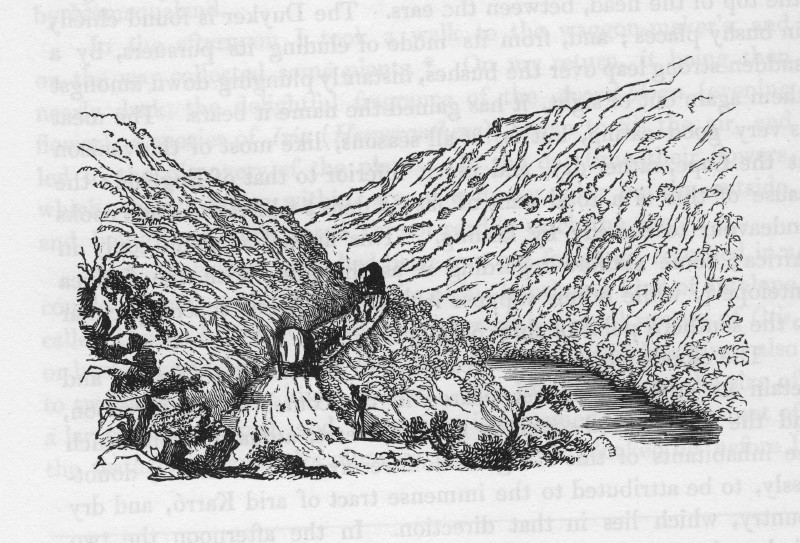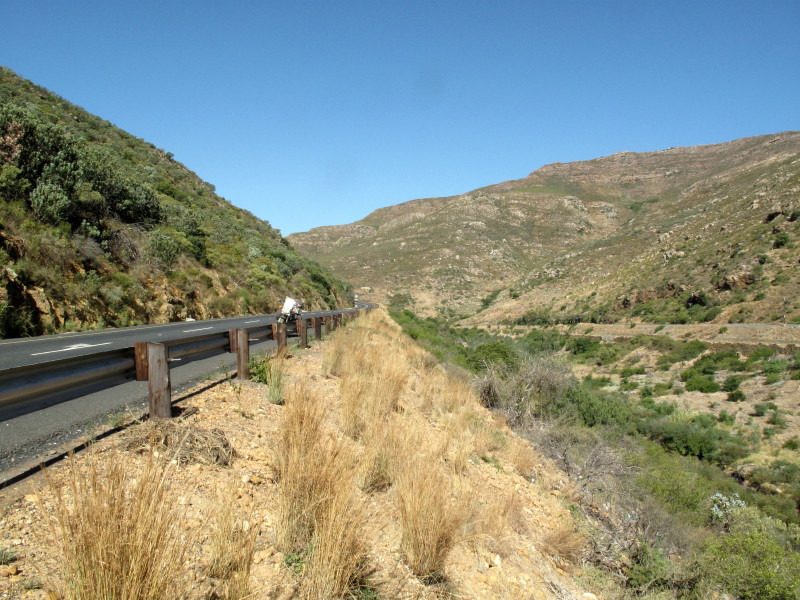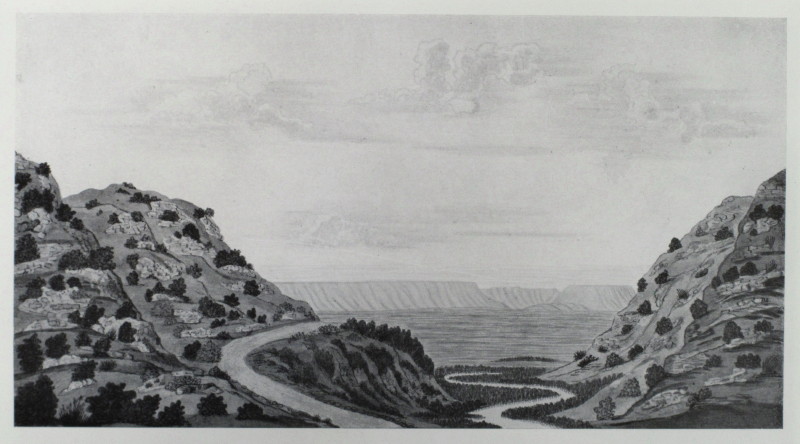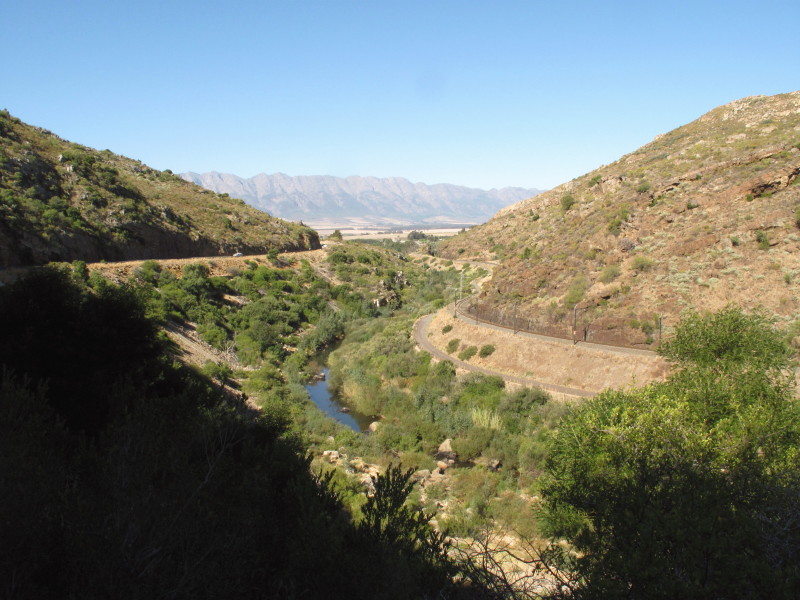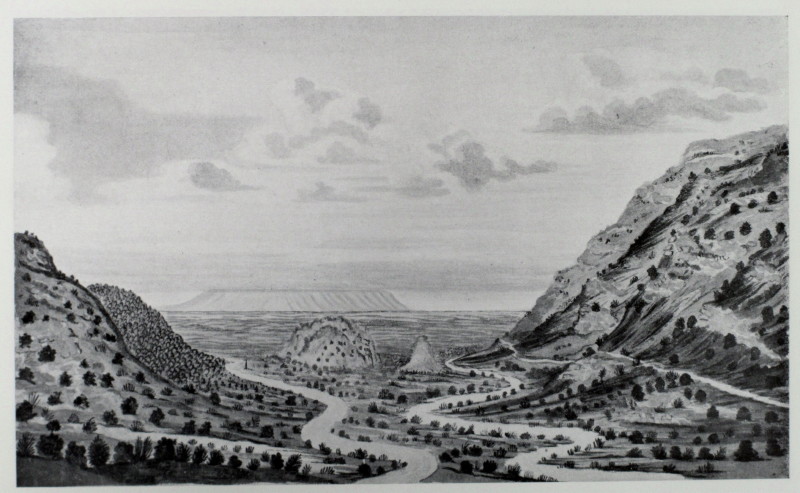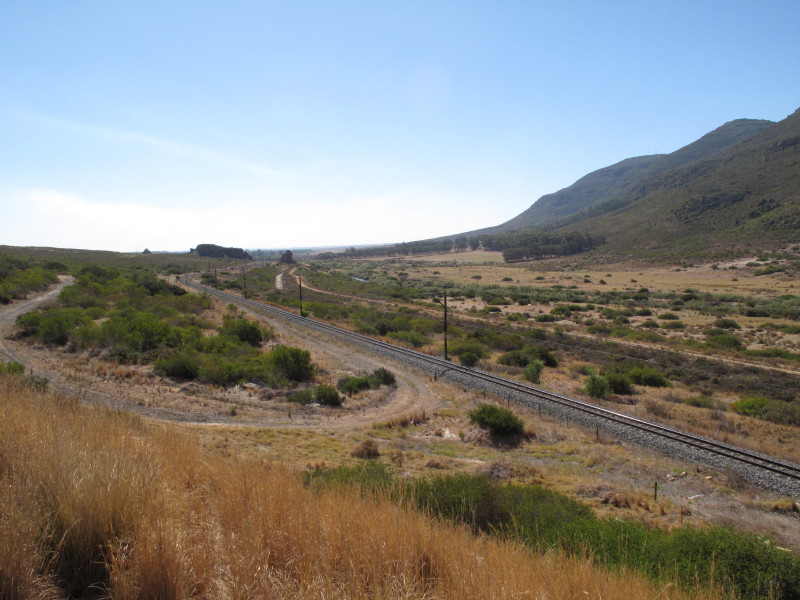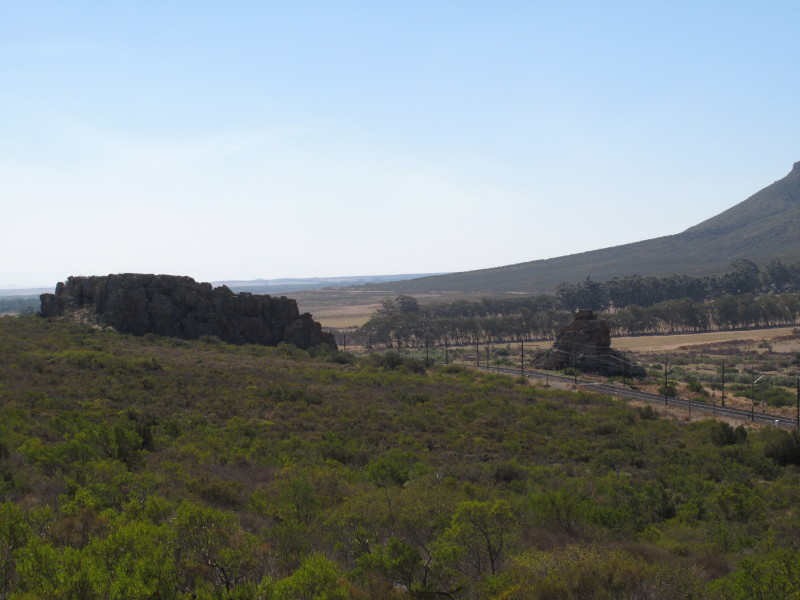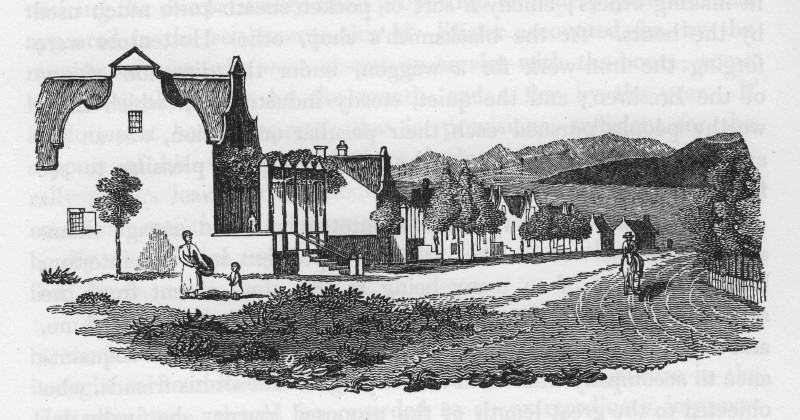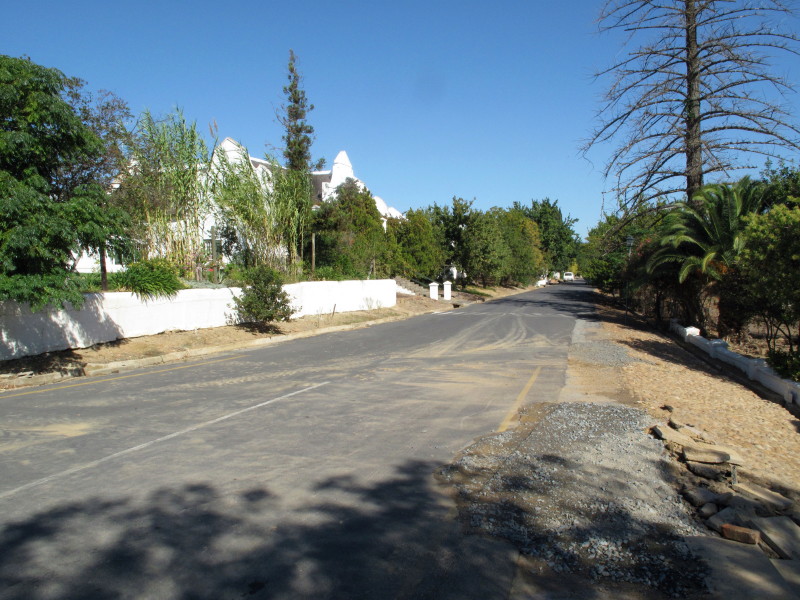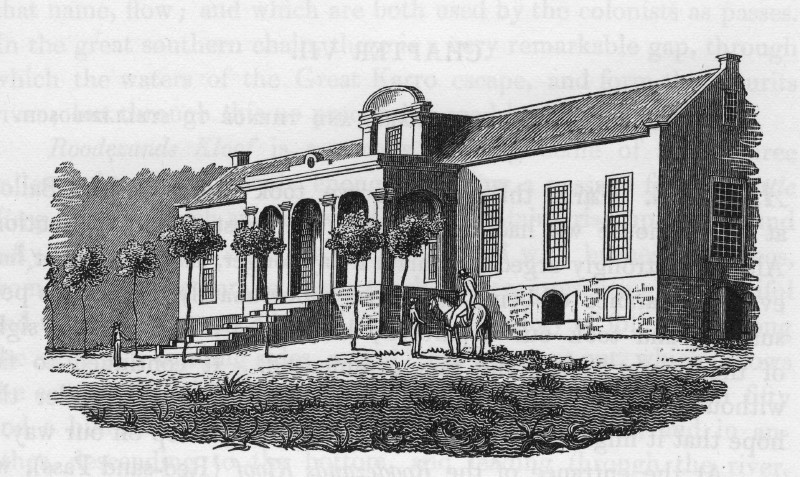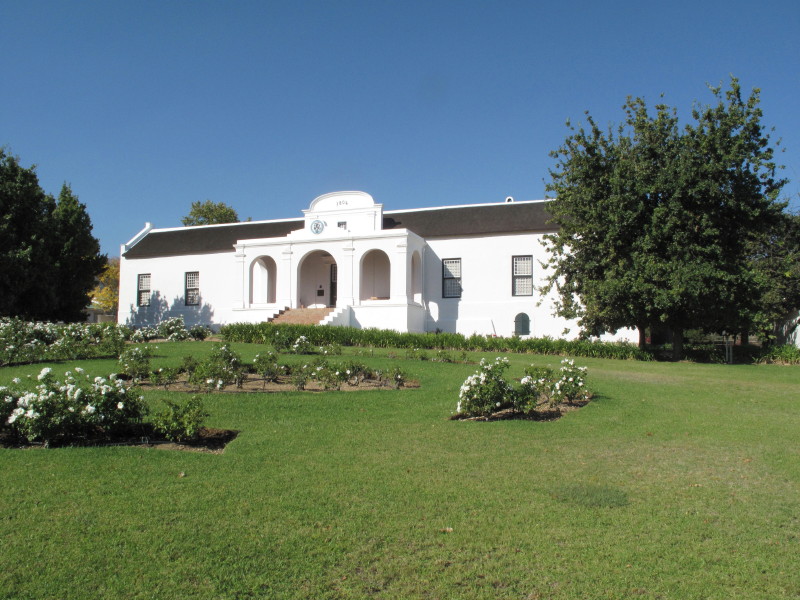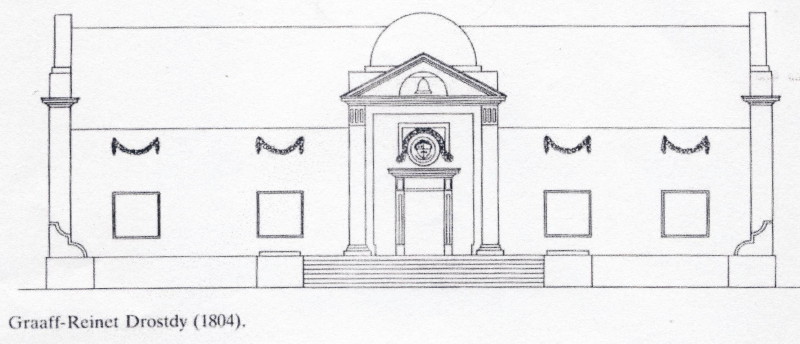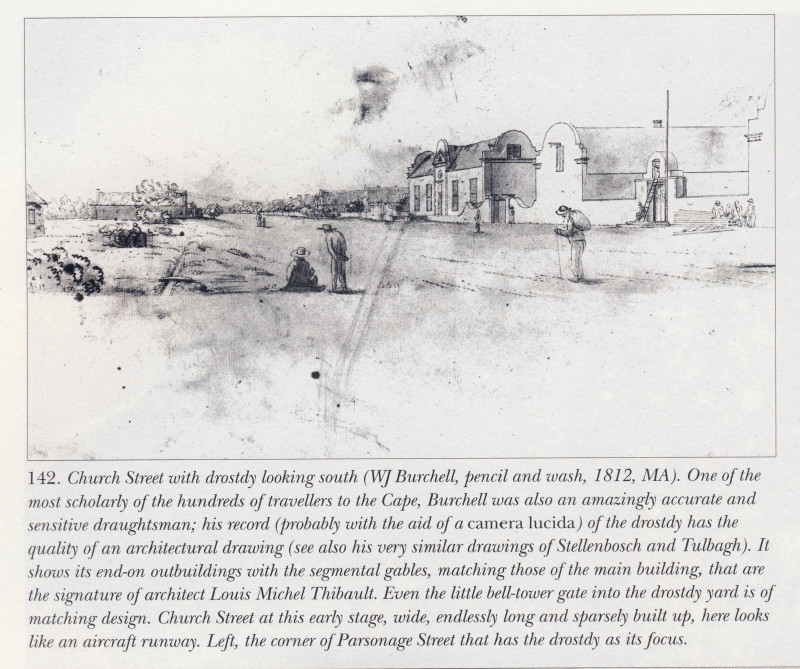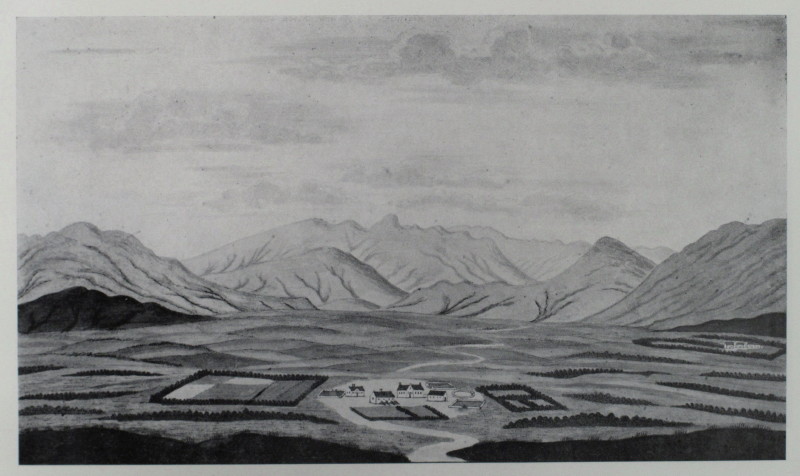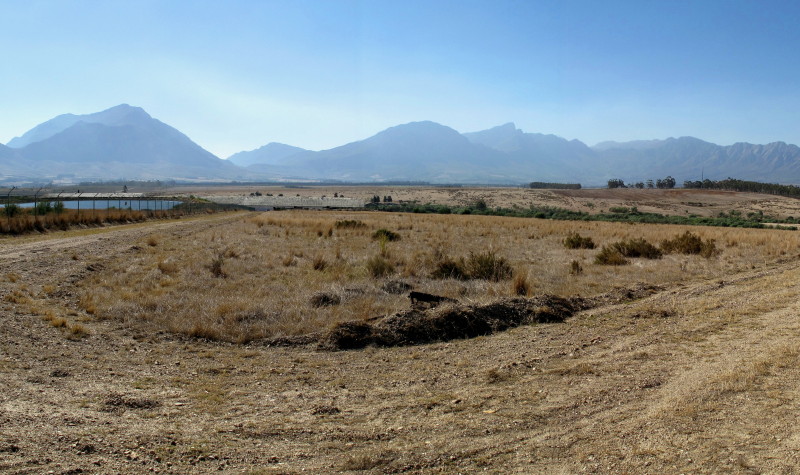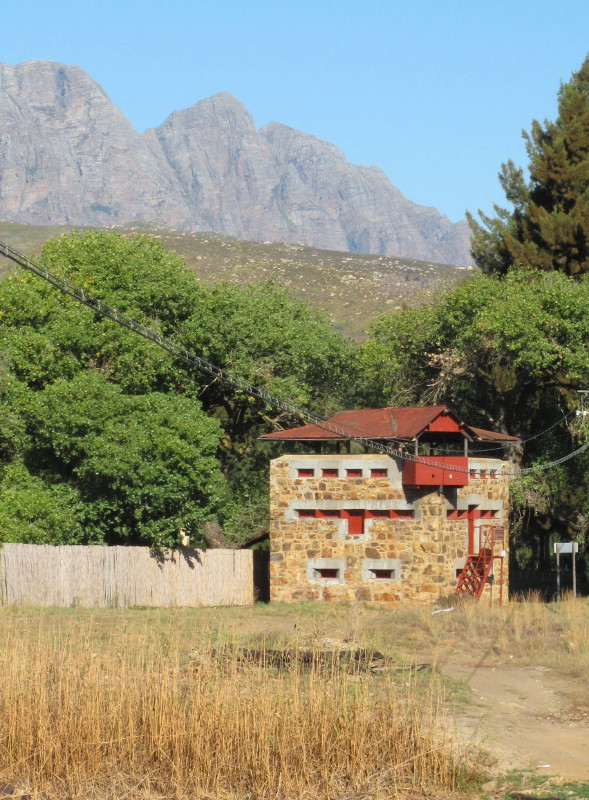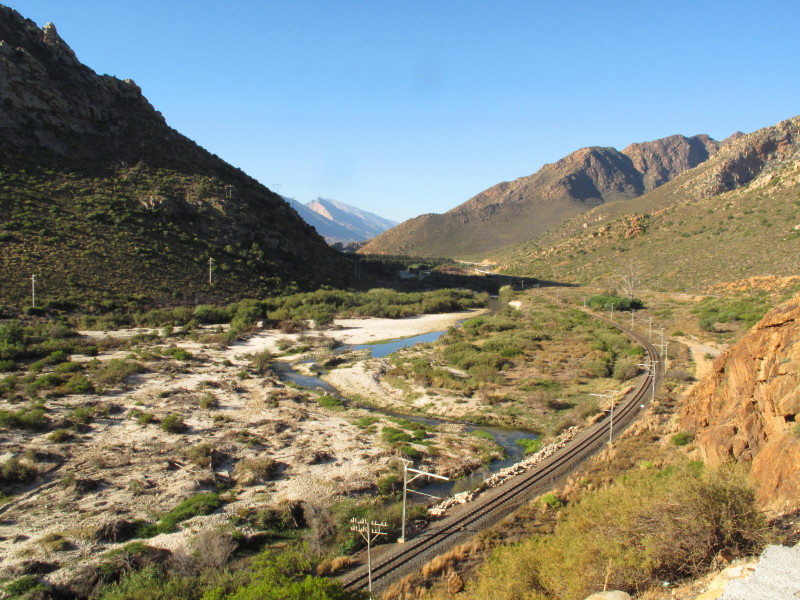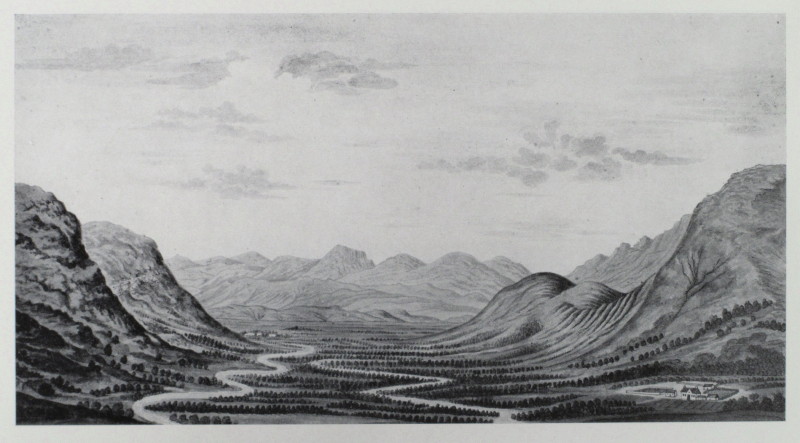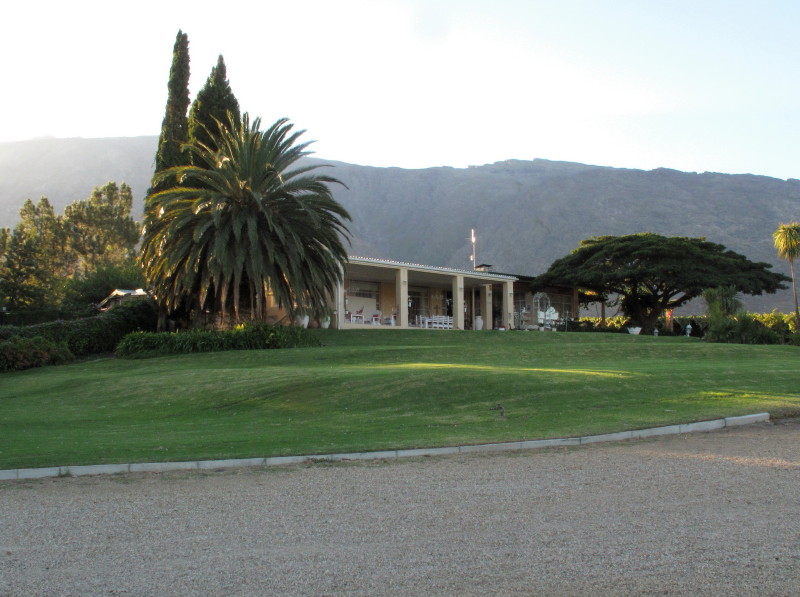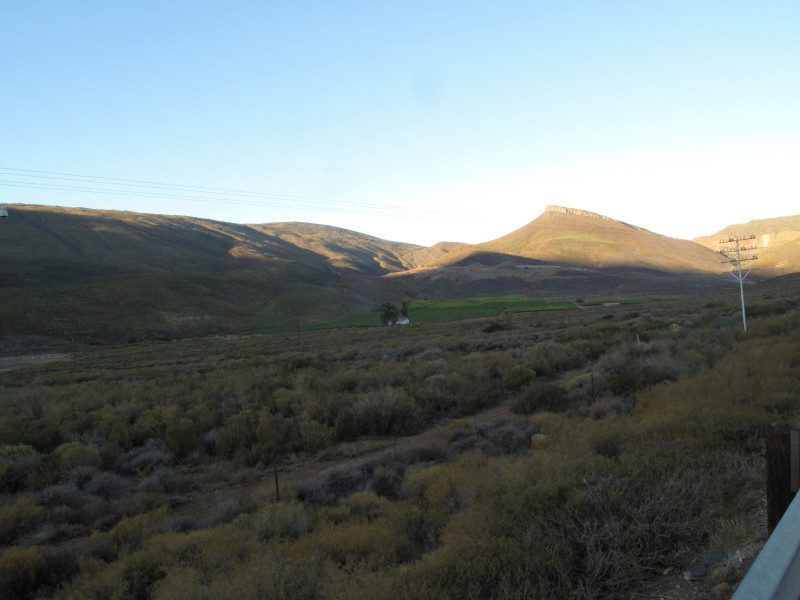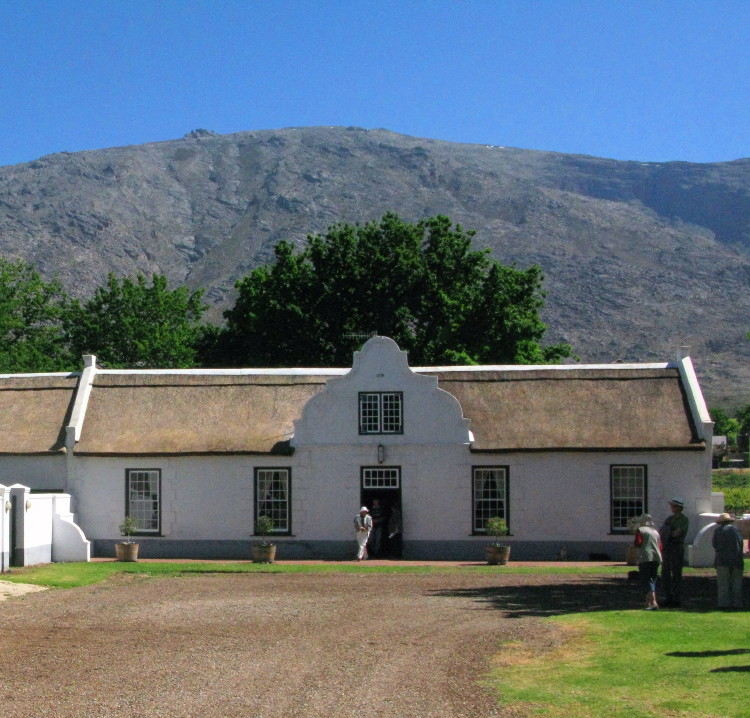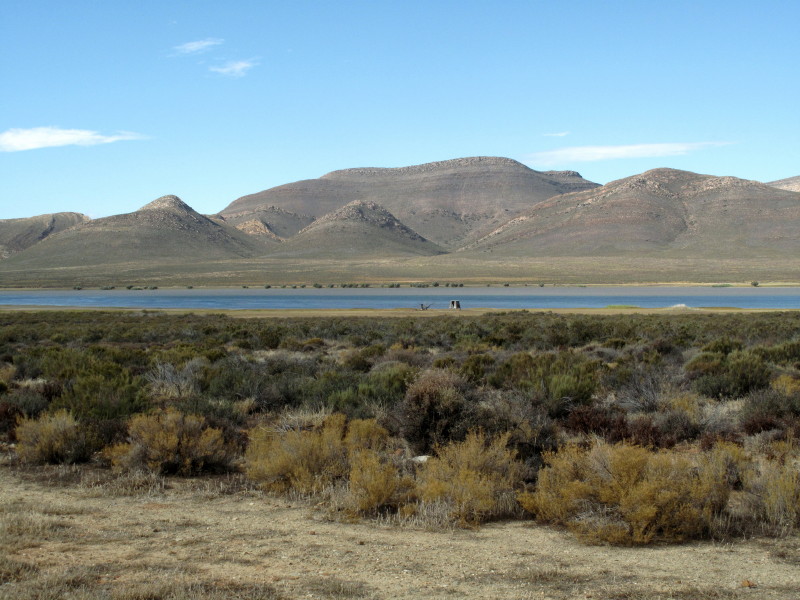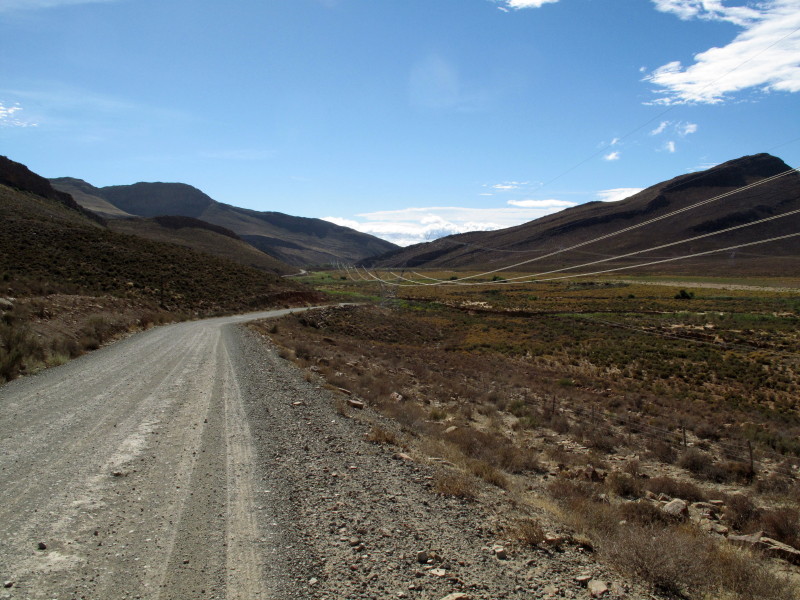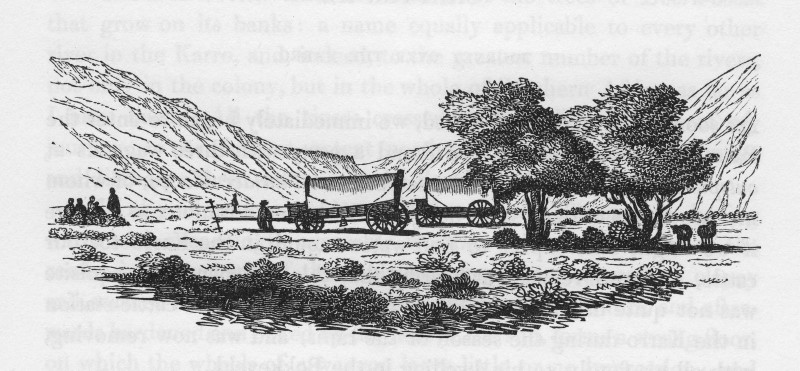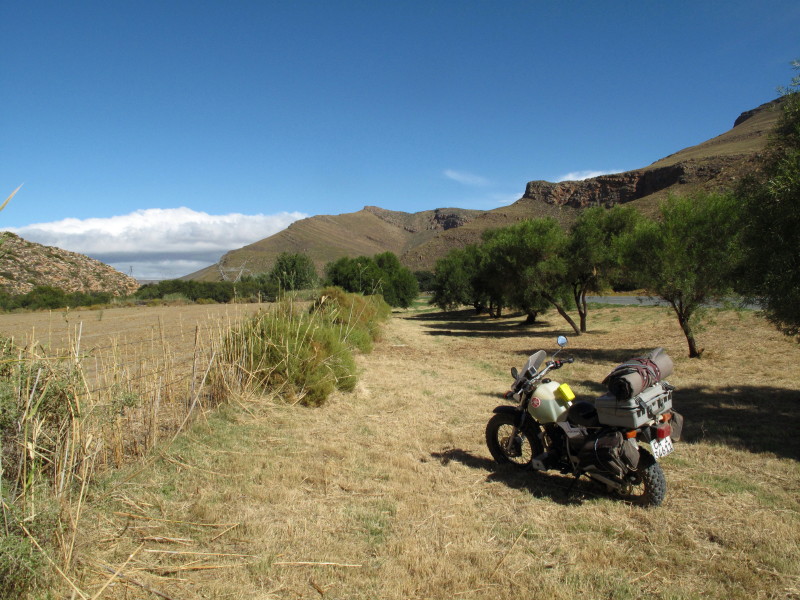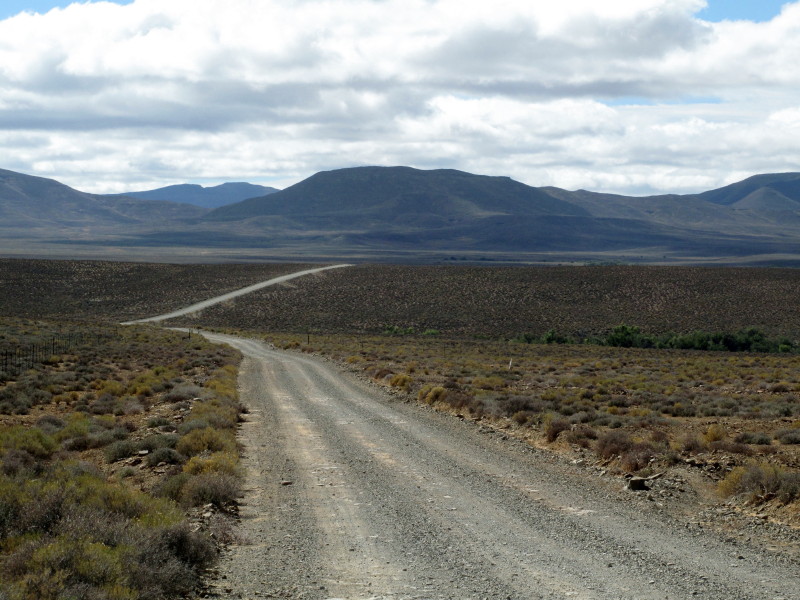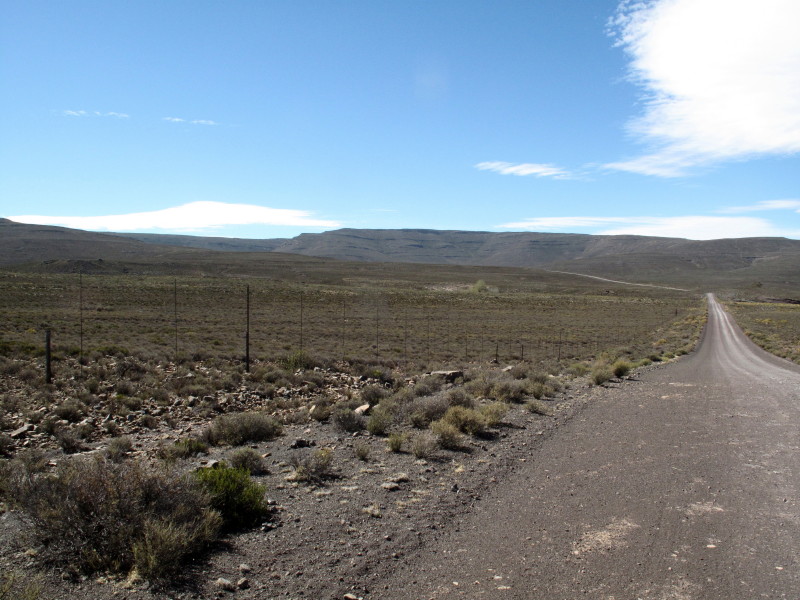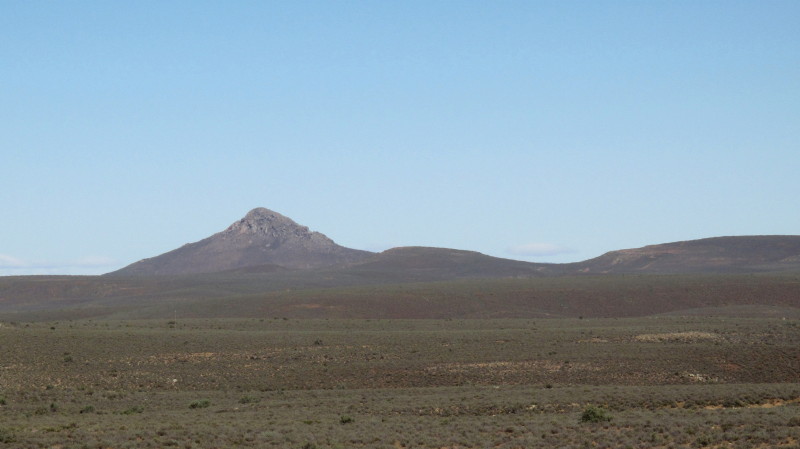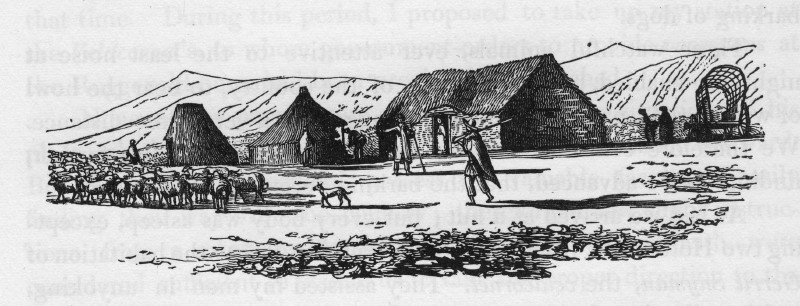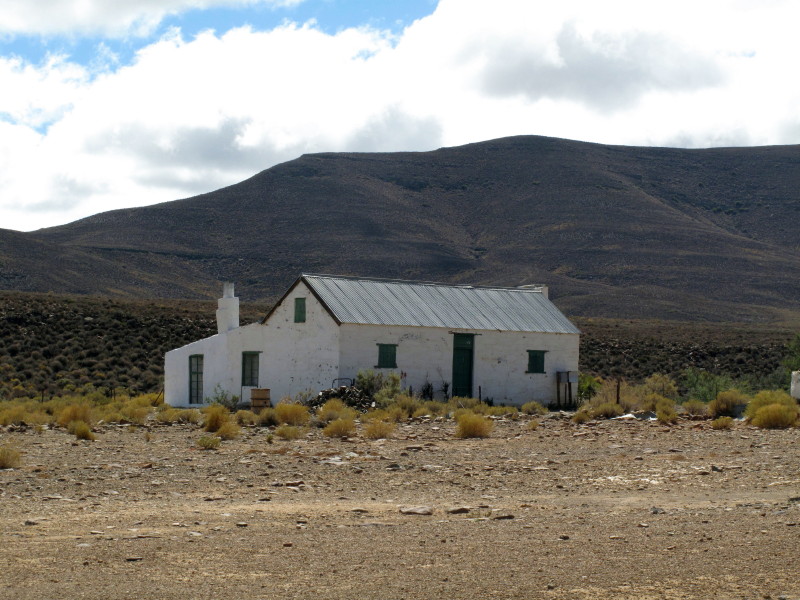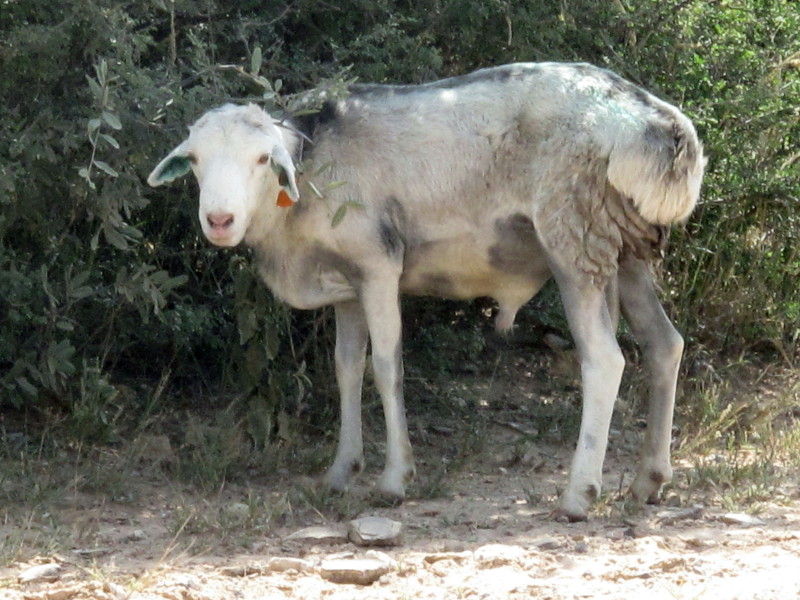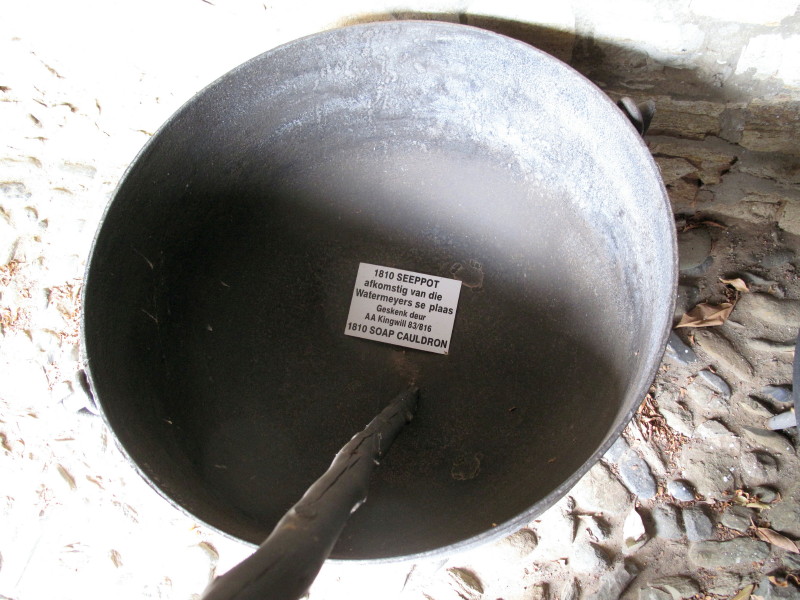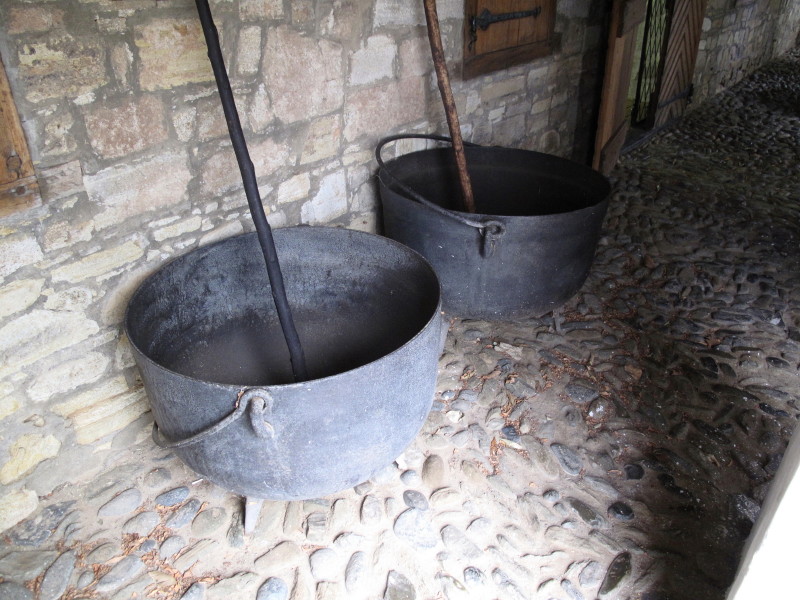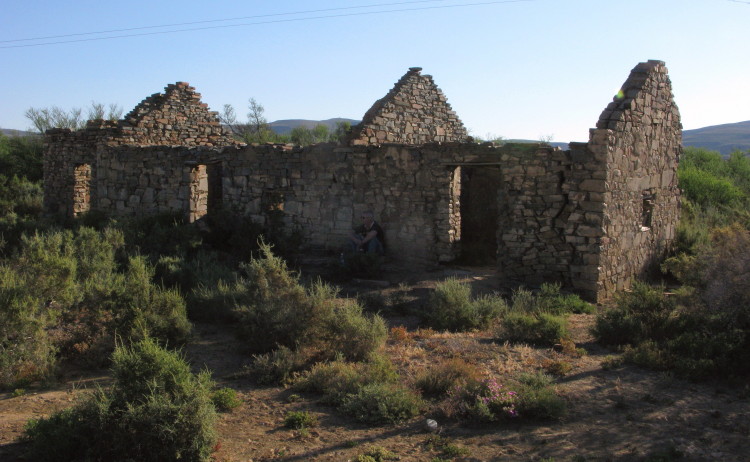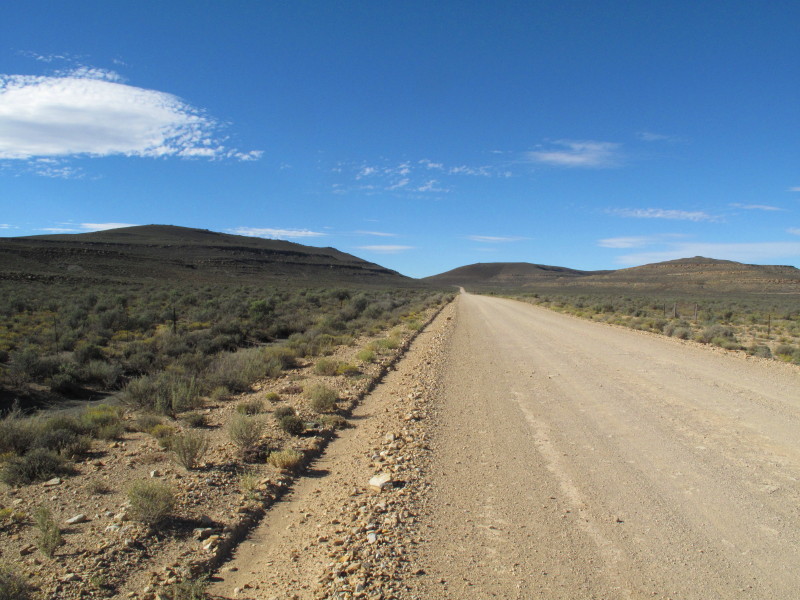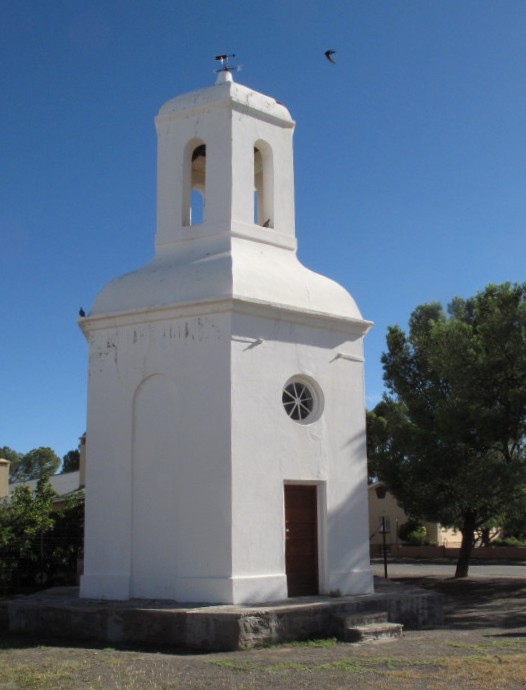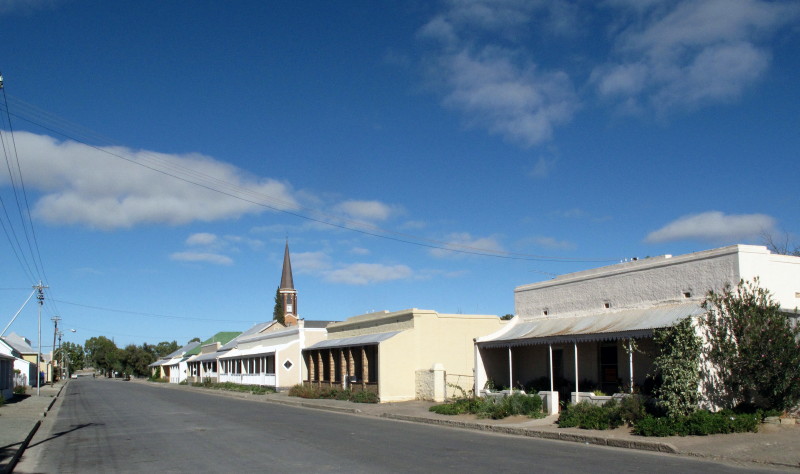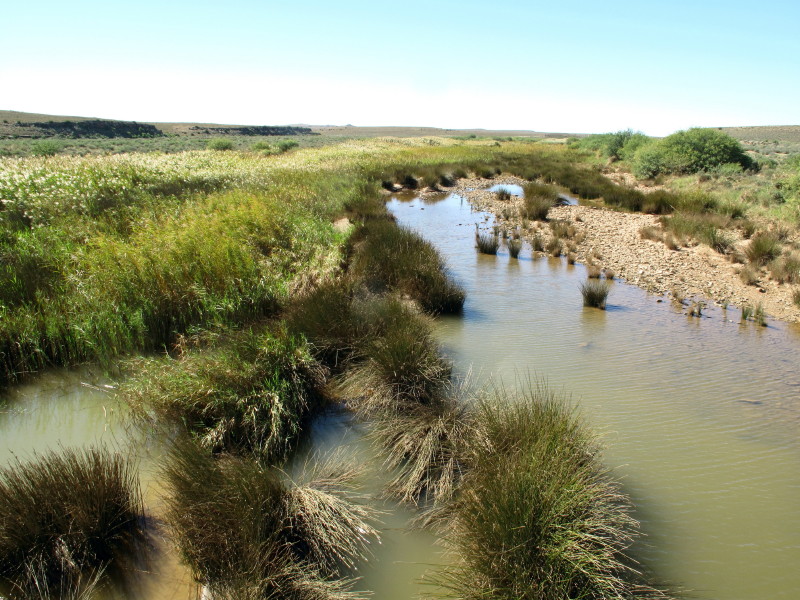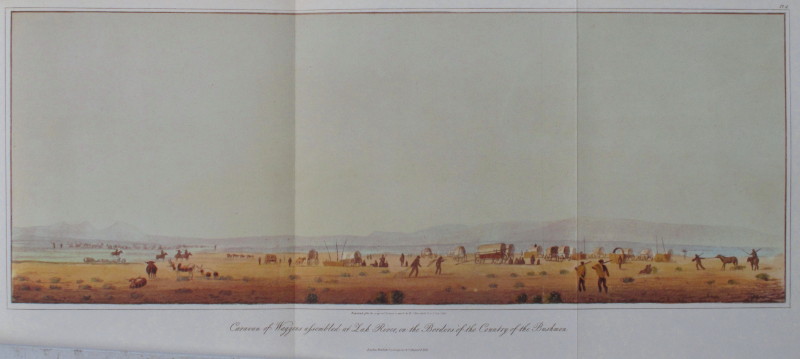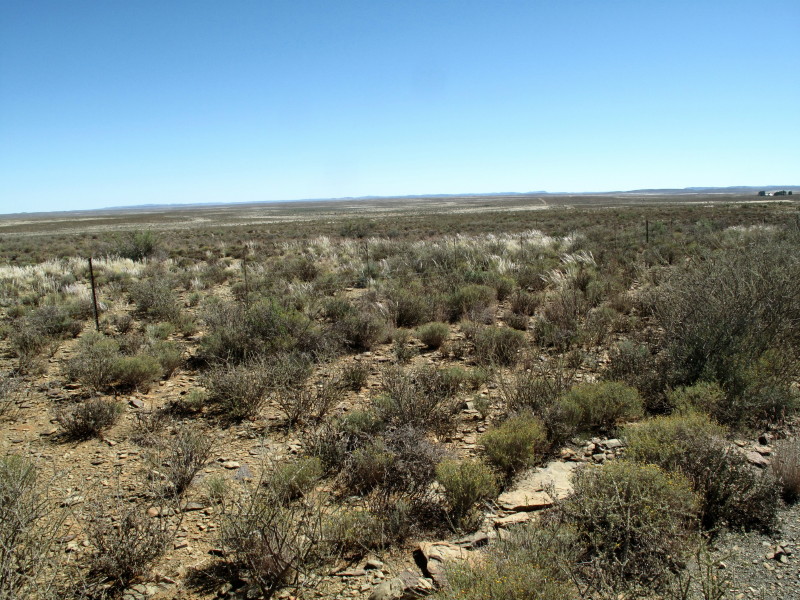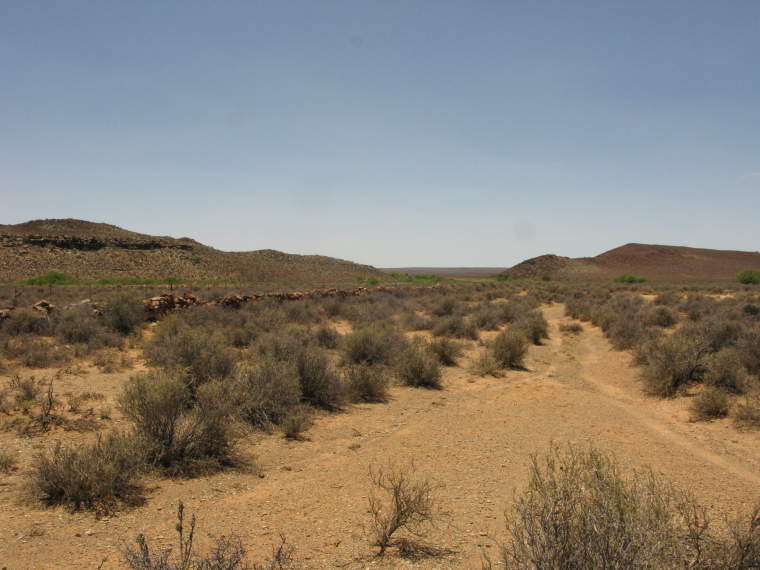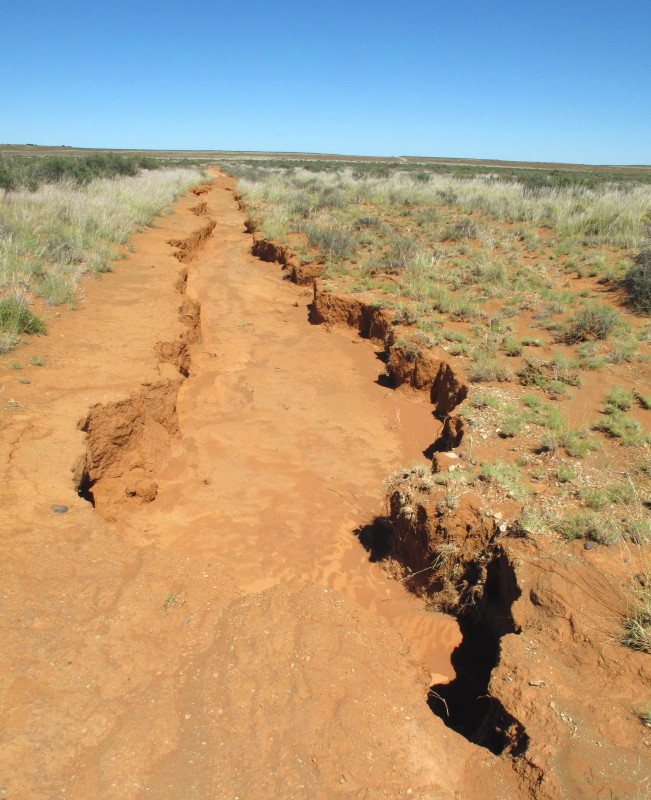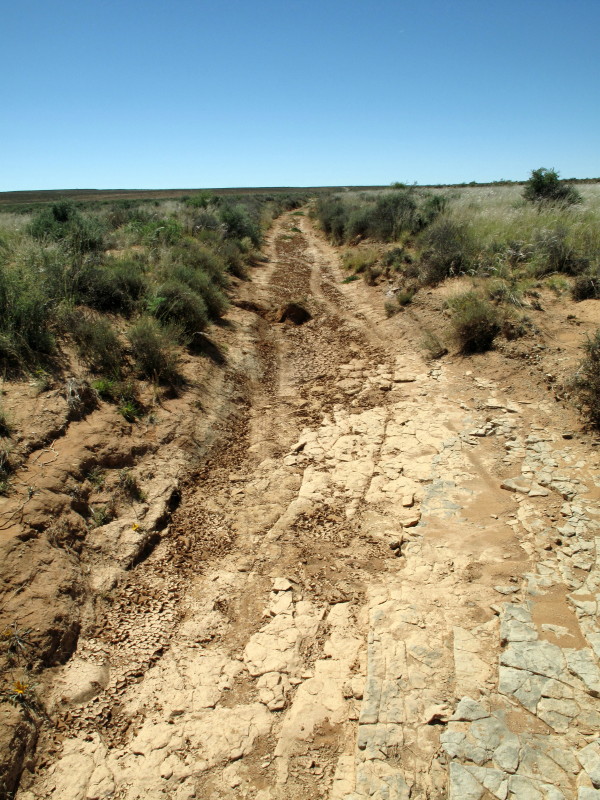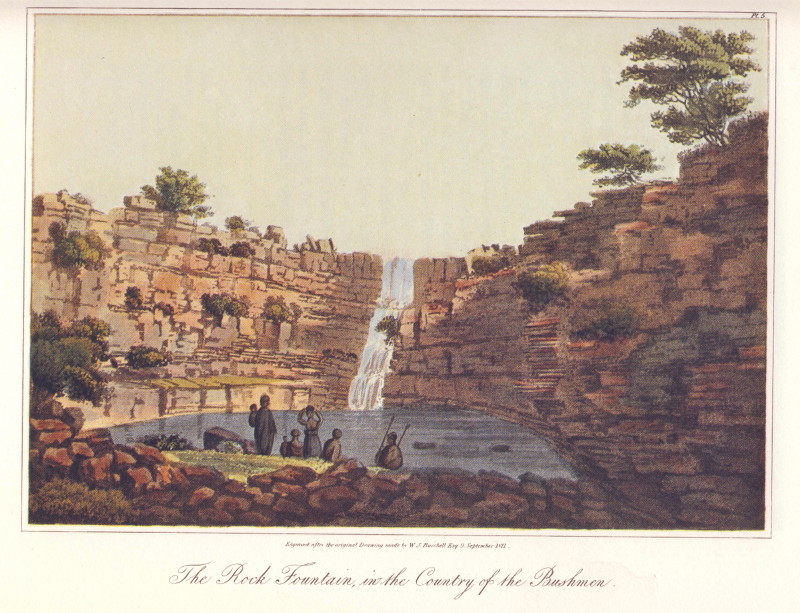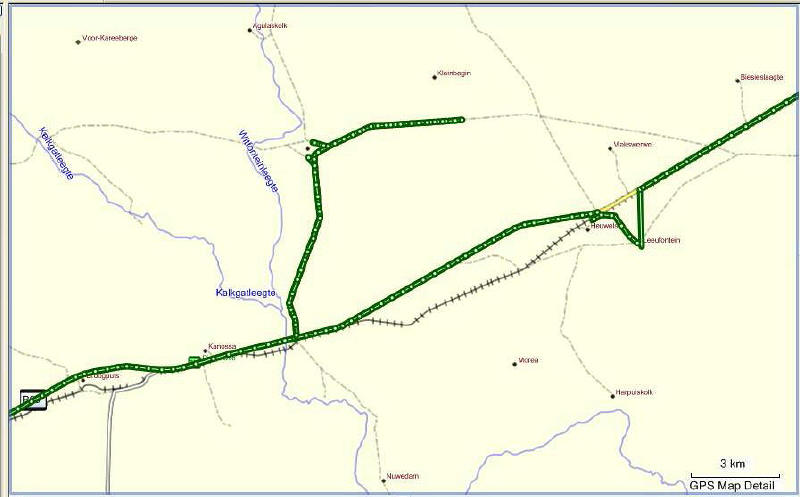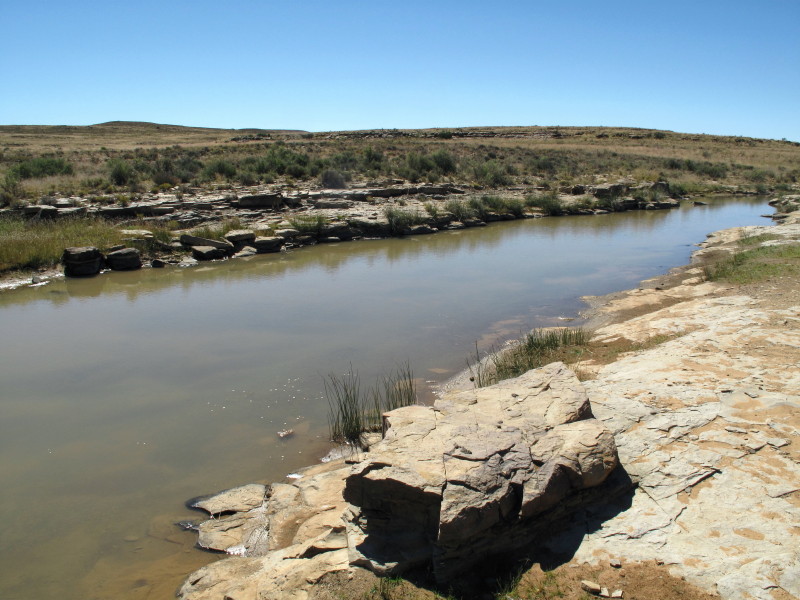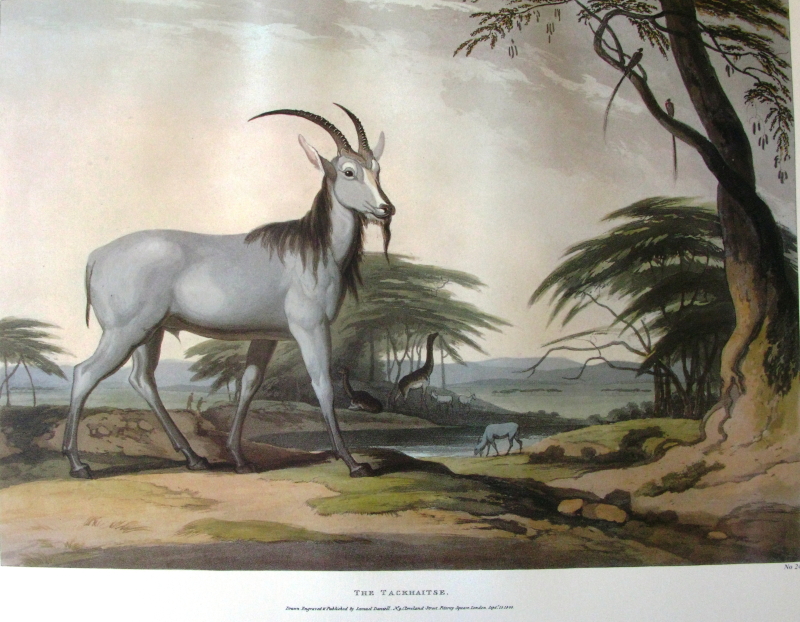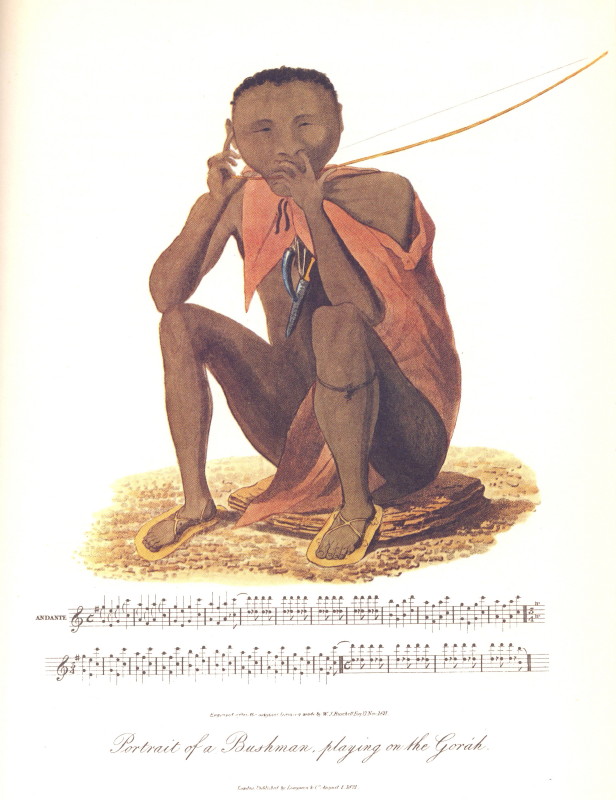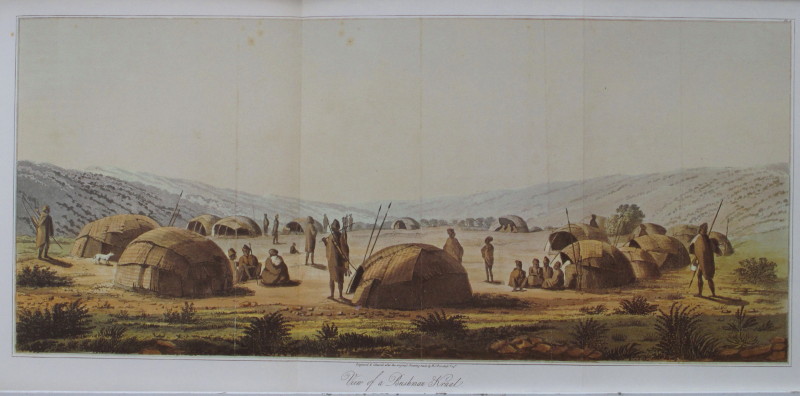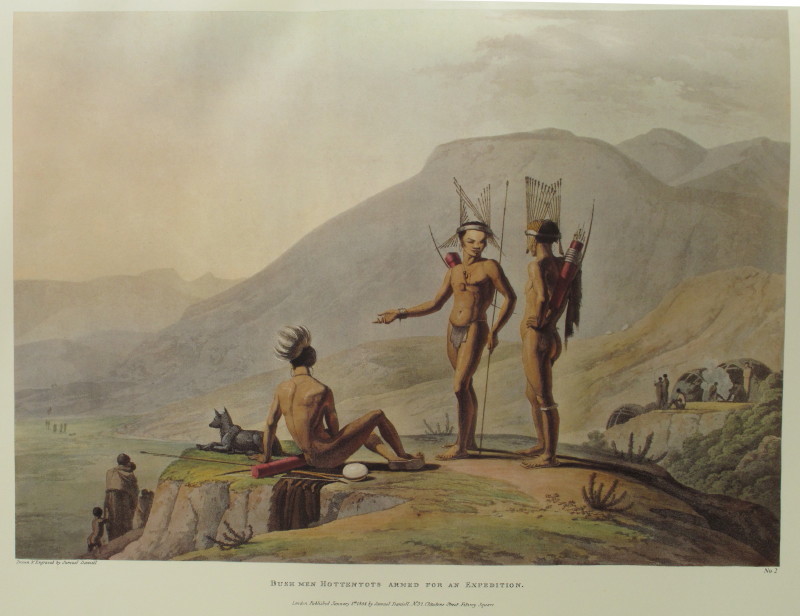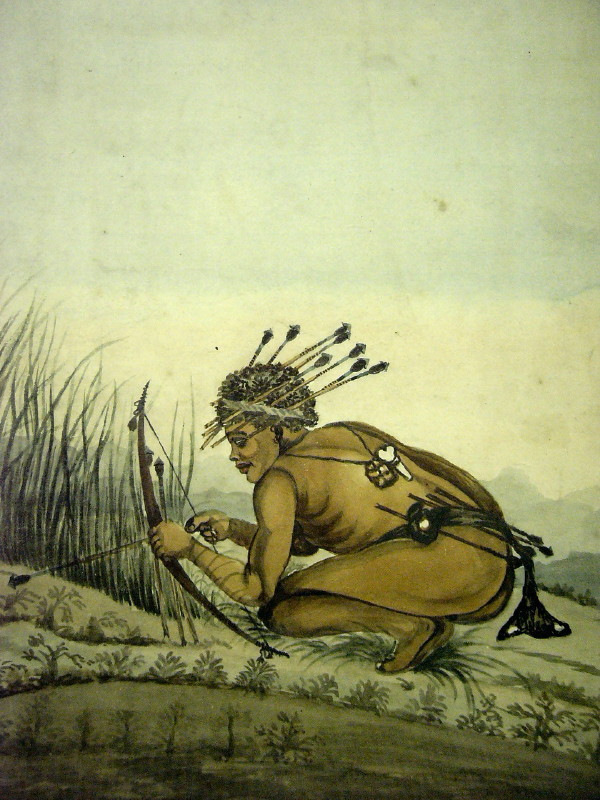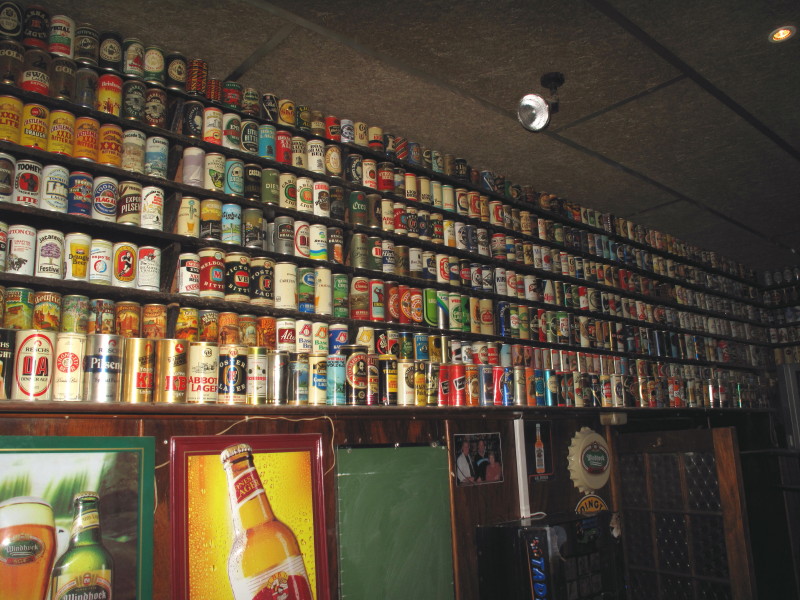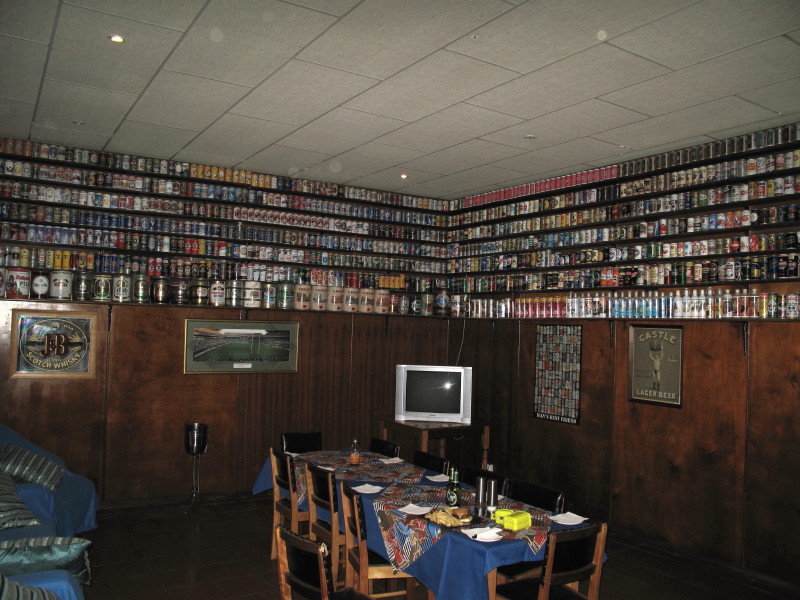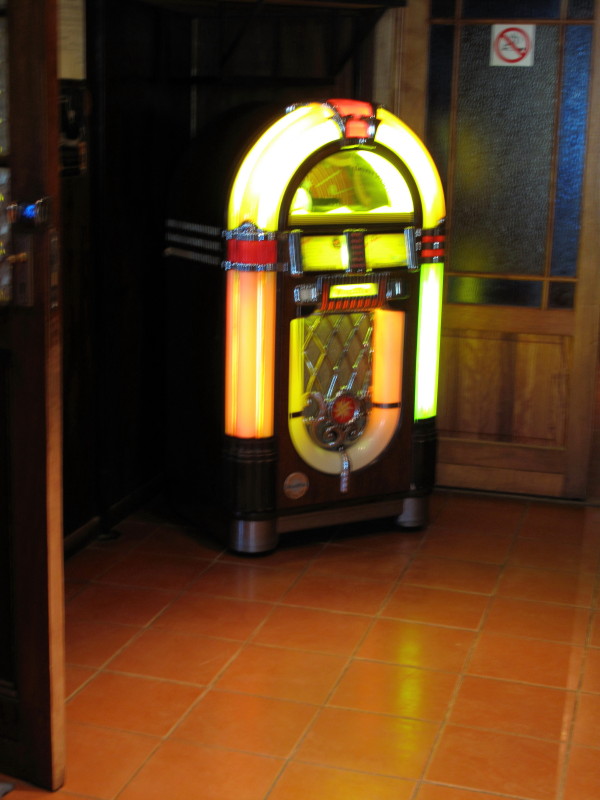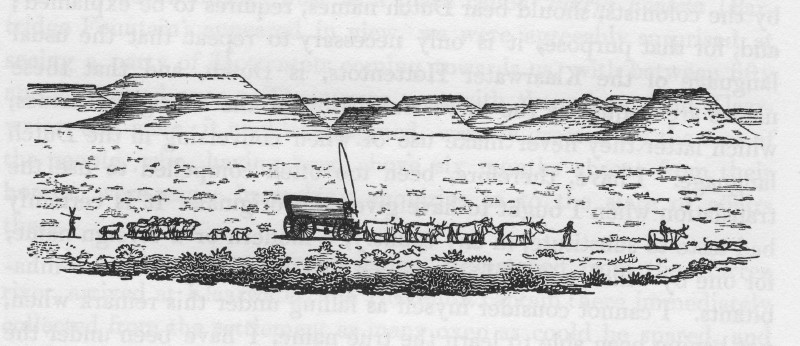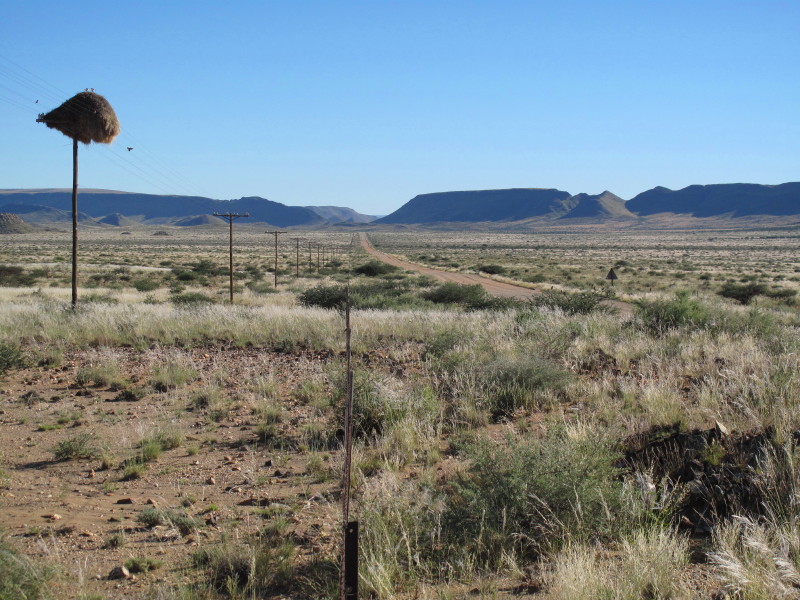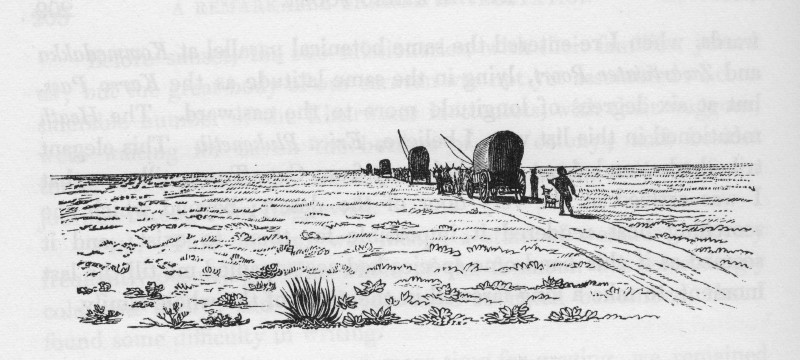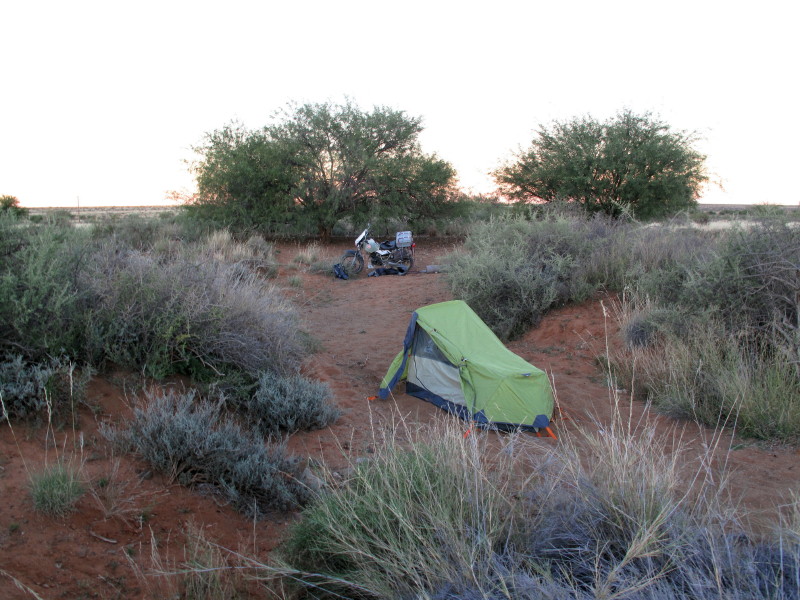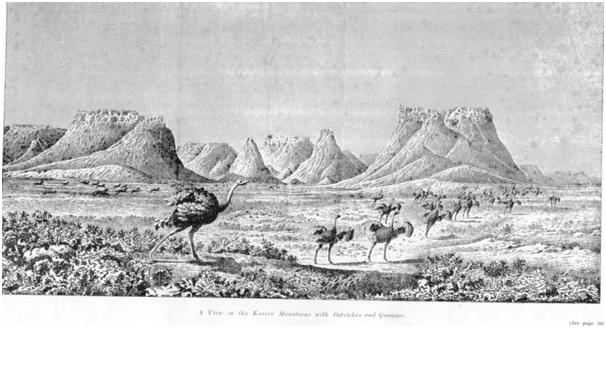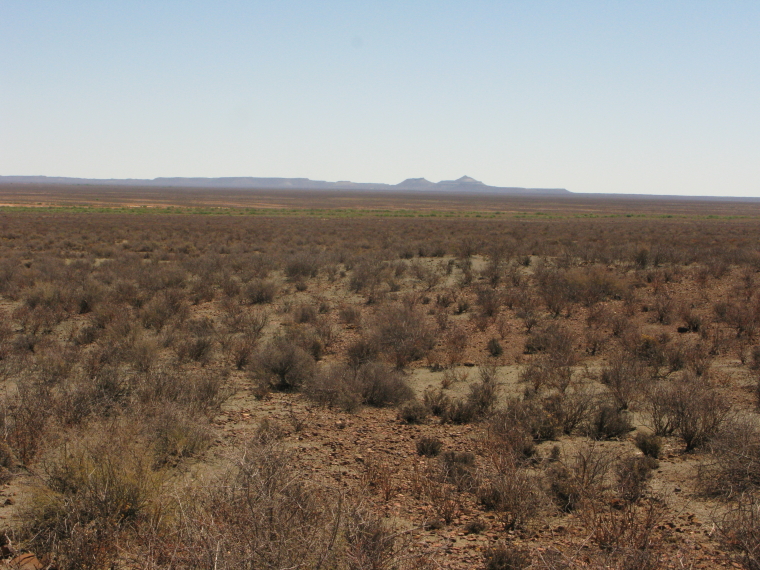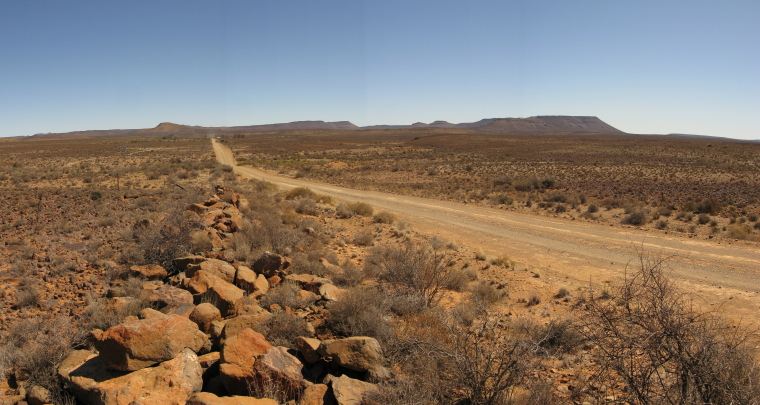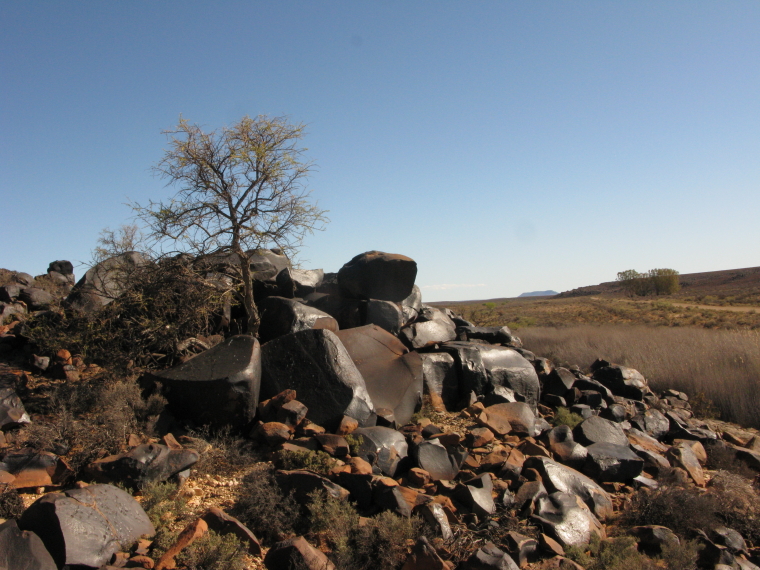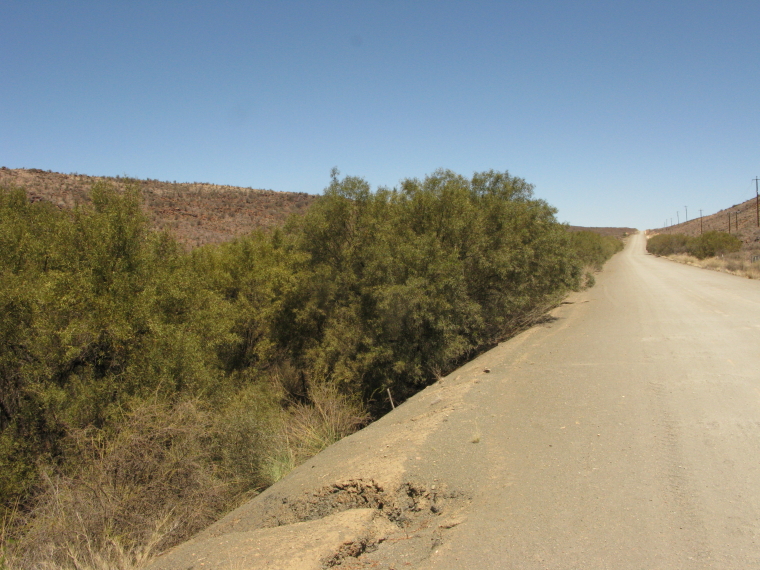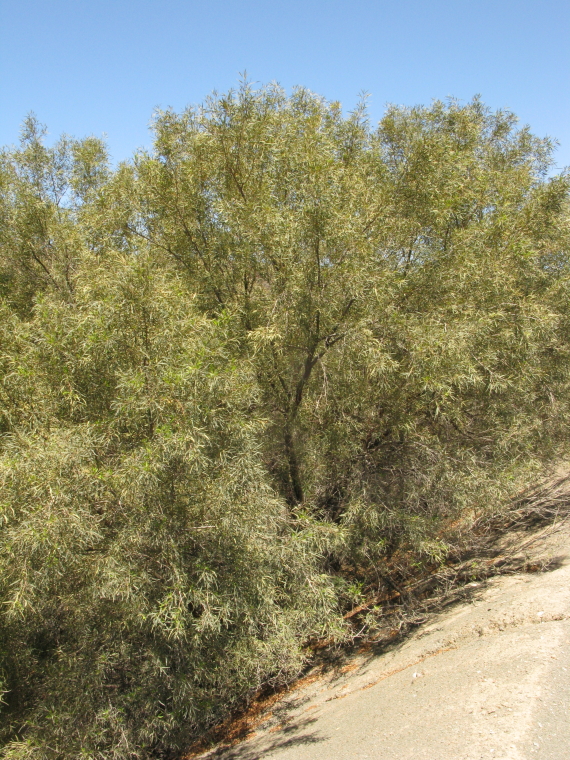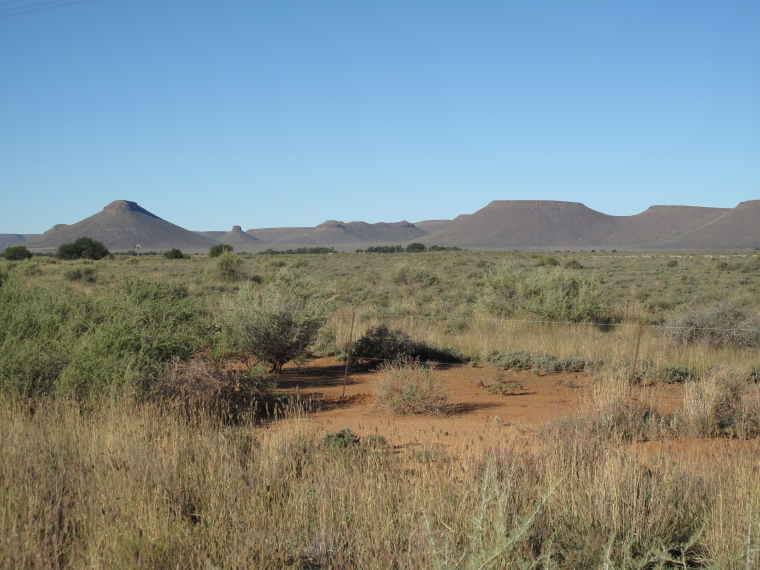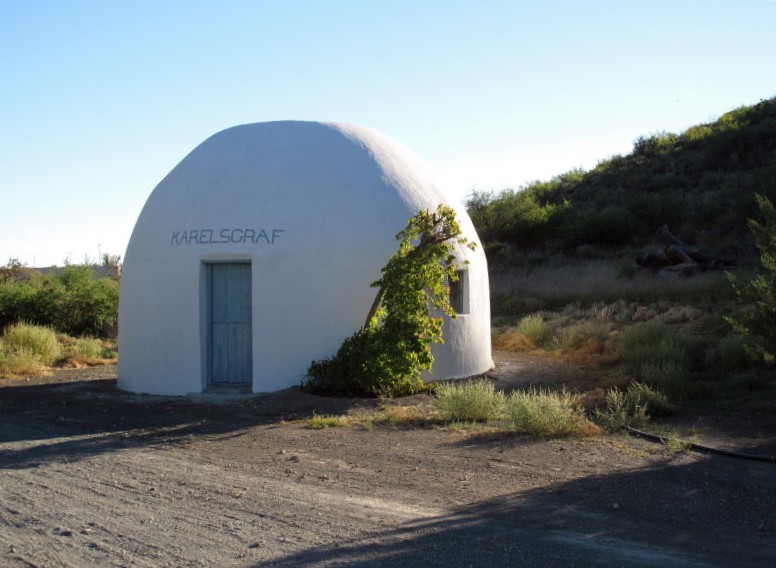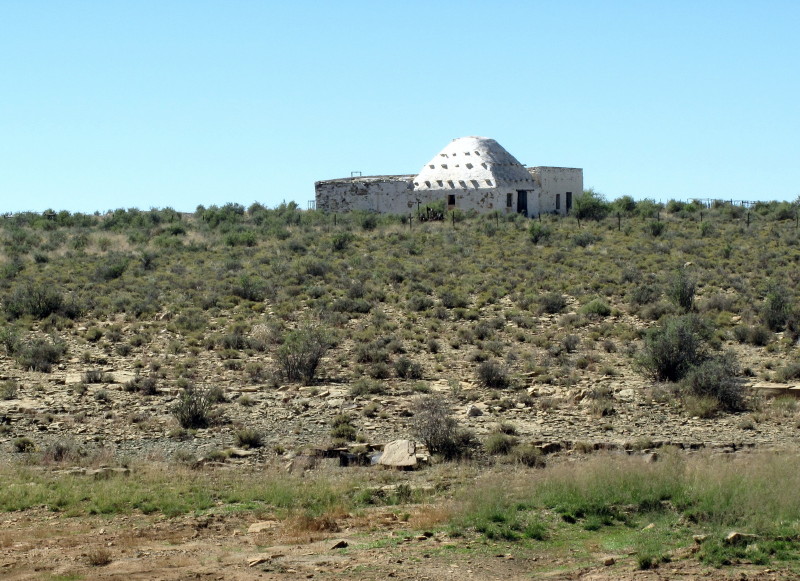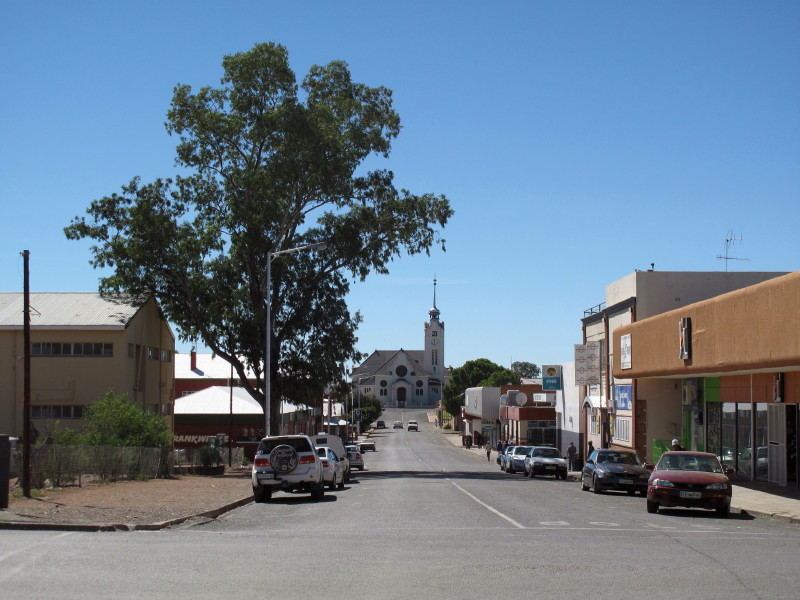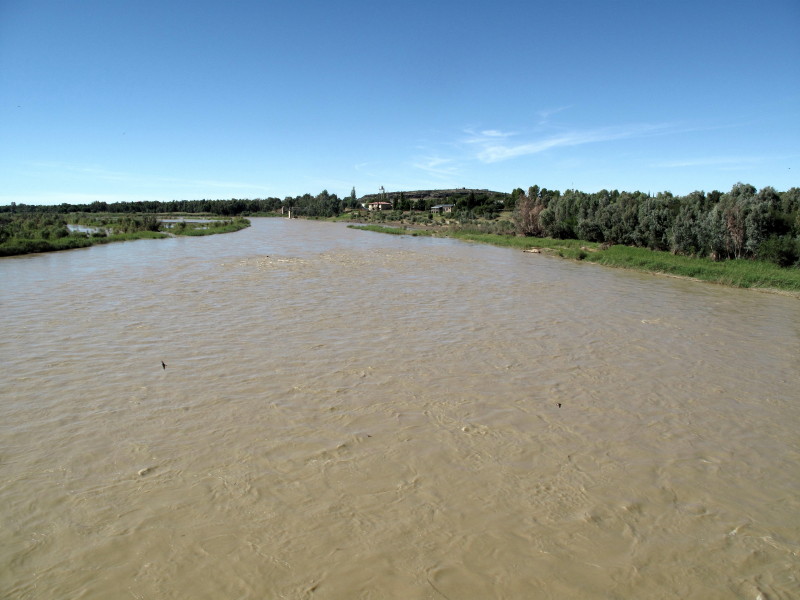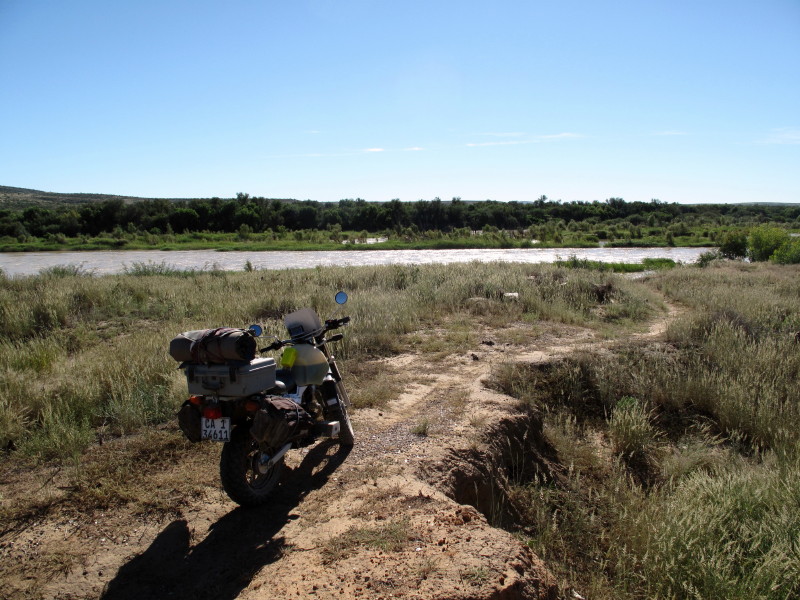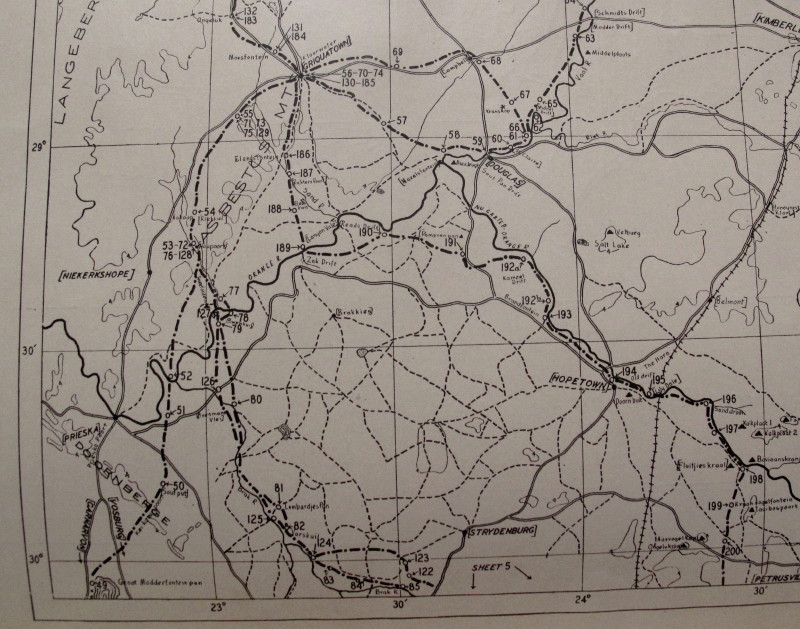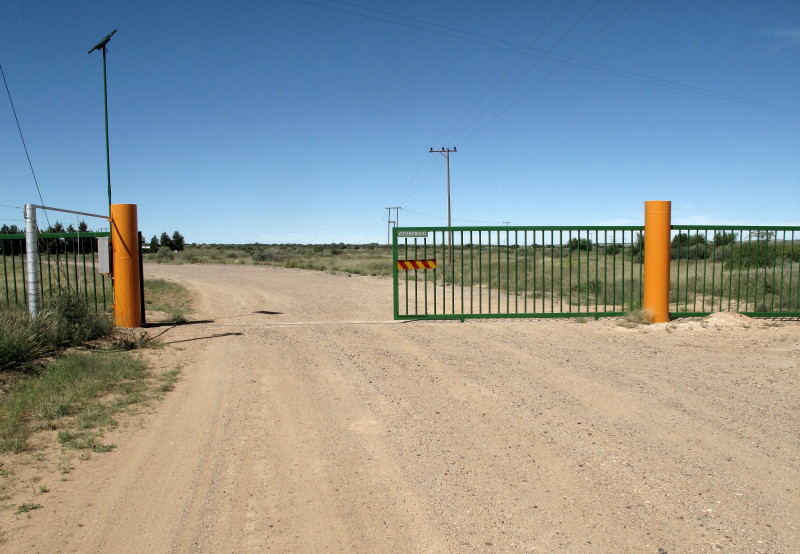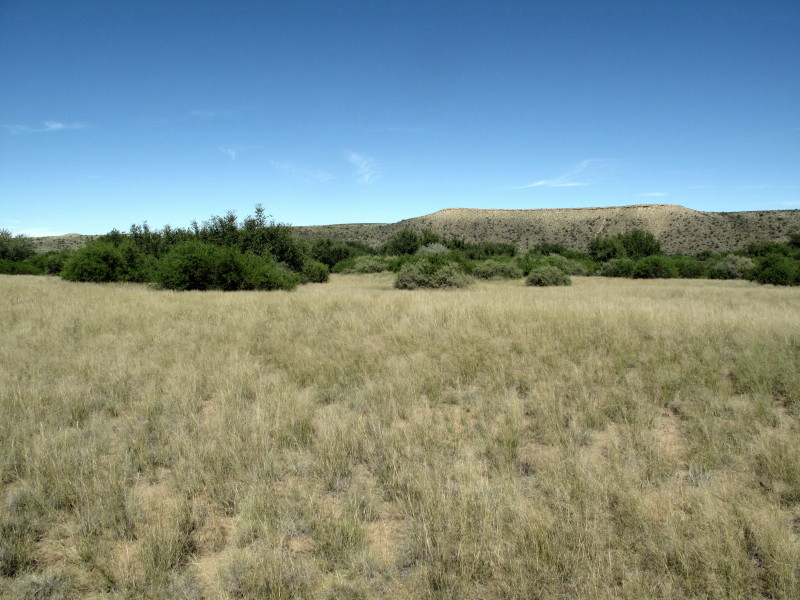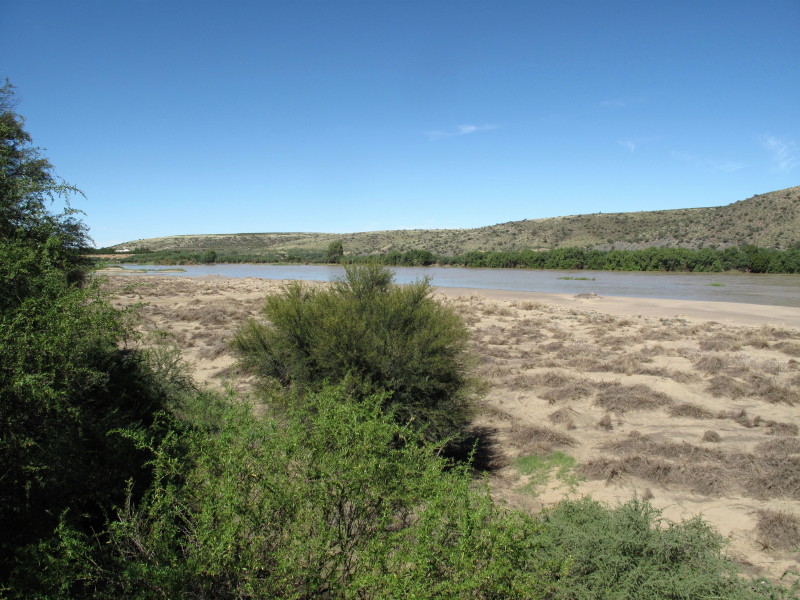tok-tokkie
Race Dog
tok-tokkie = Ralph Malan
Introduction.
Trailrider invited me to join him and Letsgofishing on a ride of the Burchell Route. Ride report *here*.
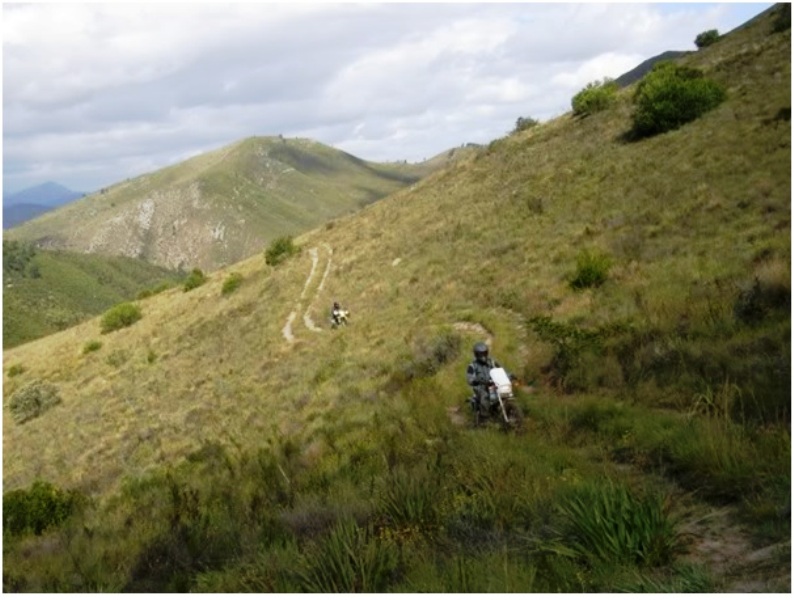
This is a picture from that report.
When I came to write up my part of the report I did a little research on Burchell. I found he had done a big trip of over 7 000 km across the Great Karoo almost to the present Botswana border, down to Graaff-Reinet, Grahamstown and Port Beaufort before returning to Cape Town on the coastal route. It was on that return journey that he did what is now the Burchell Route. I like riding in the Karoo so became interested in following his trek. I had learned that he had written a two volume account of the outward leg of his travels and that they had been reprinted in 1953 & 1967 (only 1000 copies in ’67; fewer in ’53 no doubt). They included a large scale map of his route. I found a copy in a book collectors shop and bought it (making sure the map was included). The map shows the route but it is difficult to translate into current terms since once past present day Fraserburg it was pretty well unexplored country. However there was a good introduction in the reprint from which I learned that Helen McKay had published Sketch Map of Burchell’sTrek in South African Journal of Science in 1943 and had written a four part series about him in Journal of South African Botany in 1941. I went to the S.A. Library to read that stuff. The Sketch Maps were excellent as they showed his route superimposed on a then current map of South Africa so I had not only the town names but also the major roads shown. Fortunately I had taken my camera along so proceeded to photo the 10 maps together with the register of each days travel (not using flash). I had almost completed the pictures when an official noticed me & said it is not permissible to photo in there (apparently you can get photostats at considerable expense & quite a delay). No matter; I had what I needed.
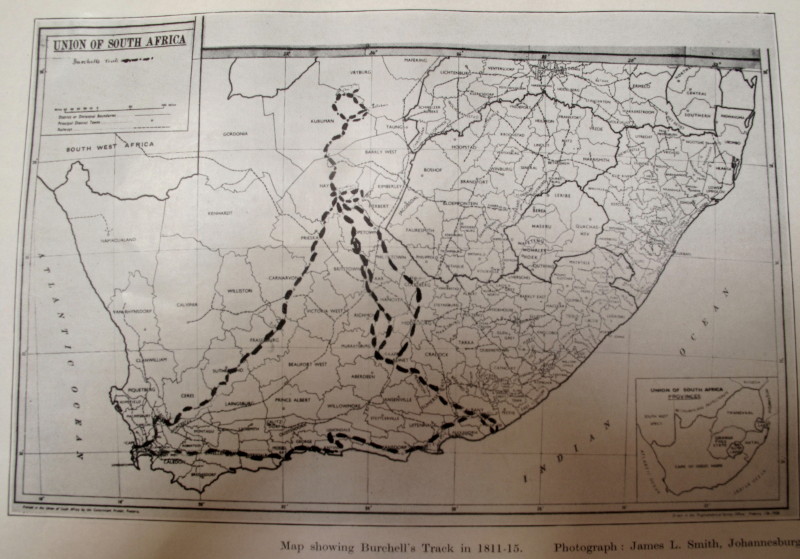
This is a picture of his entire trek. He went up through the Great Karoo to what is now Griekwastad (Klaarwater mission then) Did a hippo hunting trip to Douglas (east) then a long trek down to Graaff-Reinet on horseback to recruit staff for the rest of his trip. A loop north of Griekwastad where he spent some time at Litakun (now Dithakong) which was the ‘capital’ for the local Tswana. Then he went on what I call the giraffe trip up to Heuningvlei and down to Kathu (Sishen) and back to Griekwastad. From there he went down to Graaff-Reinet again but by wagon this time. Down to Grahamstown (not there then: area called Albany) and Port Beaufort. Then back to Cape Town through Uitenhage, Port Elizabeth, Langkloof, Plettenburg Bay and George. That took him from June 1811 to February 1815; he was not travelling all the time as he stayed in Griekwastad and Litakun for extended periods.
I read the two volumes. They are quite big (you can now download pdf versions from Google but that does not include the big map nor the valuable introduction that alerted me to McKay’s useful work). Burchell was a naturalist who collected over 50 000 specimens; largely plants as that was his main interest but also insects, birds and animal skins. A large part of his writing is notes about the plants etc. In 1935 Prof Notcutt extracted the bits about the actual travels and published them as an English Reader for South African children. I got to see that at the S.A.Library and was amazed to find it is a book as small as a A5 week at an opening diary (though the writing is quite a bit smaller than in the original book).
I retraced the trek (but excluded the horseback trip to Graaff-Reinet and back) fairly closely on my TW200. It took me 16 days riding 5 700km.
Burchell includes many woodcut engravings and some large colour plates in his book. I wanted to photo what those same things look like today. We also have a copy of Daniell’s African Scenery and Animals which includes pictures of Litakun (Daniell was there just ten years before Burchell) so I decided to have a sub theme of replicating his pictures also. We also have the books of Schumacher & Le Valliant’s with pictures of various parts of the route from the same era so I added them to my list. A side plot for the ride.
My report is aimed at others besides WD members – historians and art appreciators may also be interested in parts of what I have to say. I wrote a draft of my Ride Report in the usual day by day style in four sections,:
1. A brief report of my ride each day.
2. A report on Burchell’s trek for the same bit.
3. Copies of the pictures with my photos of the same view.
4. Some discussion on topics that arise which interested me.
It is very long so I am now writing a report divided into the major geographical regions with little about my ride, something about Burchell and the pictures with my equivalents and commentary about them. There were things that I came across that interested me but have nothing to do with Burchell which I have chosen to include.
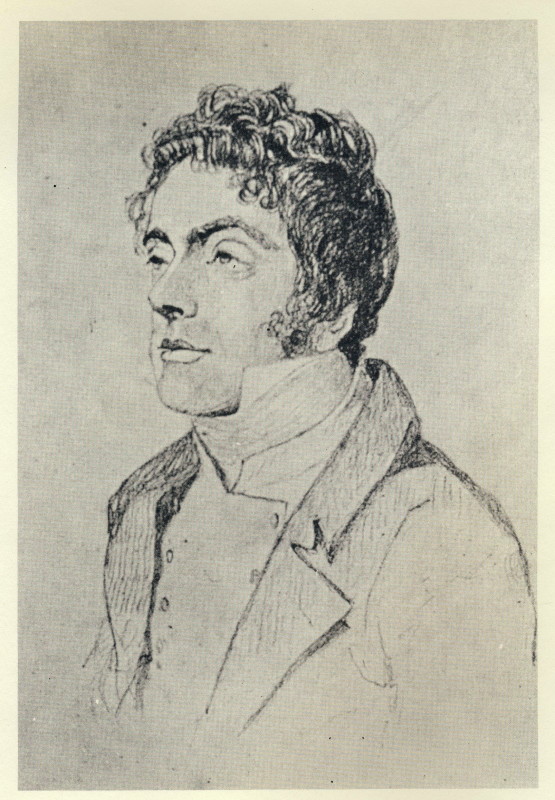
https://en.wikipedia.org/wiki/William_John_Burchell
adventurer, artist, author,naturalist, botanist, musician, draughtsman, cartographer, navigator, linguist.
'-------------------------------------------------------------------------------------------------------------------------------------
EDIT 2017/02/11. This thread must be given as a link somewhere as it continues to get hits as it had 1800 hits in August 2014 but it had 8260 in January 2017. I added it as an external link to the Wikipedia entry for Burchell when I posted it back in 2010 but the surge is unlikely to be due to that. In 2014 a bust of Burchell was erected in the botanical gardens in George to mark the bicentenary of Burchell so that stimulated some interest in him. But the majority of those hits have been in the years since then. Because of this interest I am going to add the GPS tracks of my ride. They may be of use to anyone wanting to retrace or research Burchell's trip. I am going to add them all here rather than spread them through the report on the relevant pages. I am limited to 10 per post so there are more on the next post.
The tracks can be loaded into Garmin Basecamp then viewed there and the data for each point on the track can be interrogated. Firstly you need to download the tracks from here – simply click it & Windows Explorer will open & you can save it where you wish. Alternatively the tracks can be loaded into Google Earth. In Google Earth click \File\Open\Windows Explorer pane opens – change file type to GPS(...gdb...) then find the file on your computer. A pop up asks you to convert it to a .kml track, say yes. The track then appears on Google Earth & you can see exactly where I went. A Google search will tell you more. Here is a video about it https://www.youtube.com/watch?v=3NkgeoClHrQ
‘-------------------
A new book about Burchell has been published. Burchell’s Travels: The Life, Art and Journeys of William John Burchell 1781 – 1863 by Susan Buchanan. https://www.amazon.com/Burchells-Travels-Journeys-Burchell-1781-1863/dp/1770227555/ref=sr_1_1?s=books&ie=UTF8&qid=1486888960&sr=1-1&keywords=burchell%27s+travels
It covers his whole life, providing interesting information about the times before and after his time in South Africa. To me the book was a bit academic and dry – I would have liked it to have been dramatized more.
(Having complained about the book I must say that I was unhappy with this report in retrospect. For precisely the same reason – it is a dry factual report. Some years later I did a trip in England looking at stationary steam engines. I took a lot of trouble writing up that report and deliberately included details about the characters involved and also about my wife and me – to give the report a personal component and add human interest. It was precisely because this report is so stodgy that I added that stuff to the steam engine thing. I am pleased to say that that report has had almost 80 000 hits and is still actively viewed 5 years after it was originally posted. https://advrider.com/forums/showthread.php?t=756771 I said the same in 2014 - see post #77)
2017/12/03 First picture was Photobucket. Replaced with Flickr copy
Introduction.
Trailrider invited me to join him and Letsgofishing on a ride of the Burchell Route. Ride report *here*.

This is a picture from that report.
When I came to write up my part of the report I did a little research on Burchell. I found he had done a big trip of over 7 000 km across the Great Karoo almost to the present Botswana border, down to Graaff-Reinet, Grahamstown and Port Beaufort before returning to Cape Town on the coastal route. It was on that return journey that he did what is now the Burchell Route. I like riding in the Karoo so became interested in following his trek. I had learned that he had written a two volume account of the outward leg of his travels and that they had been reprinted in 1953 & 1967 (only 1000 copies in ’67; fewer in ’53 no doubt). They included a large scale map of his route. I found a copy in a book collectors shop and bought it (making sure the map was included). The map shows the route but it is difficult to translate into current terms since once past present day Fraserburg it was pretty well unexplored country. However there was a good introduction in the reprint from which I learned that Helen McKay had published Sketch Map of Burchell’sTrek in South African Journal of Science in 1943 and had written a four part series about him in Journal of South African Botany in 1941. I went to the S.A. Library to read that stuff. The Sketch Maps were excellent as they showed his route superimposed on a then current map of South Africa so I had not only the town names but also the major roads shown. Fortunately I had taken my camera along so proceeded to photo the 10 maps together with the register of each days travel (not using flash). I had almost completed the pictures when an official noticed me & said it is not permissible to photo in there (apparently you can get photostats at considerable expense & quite a delay). No matter; I had what I needed.

This is a picture of his entire trek. He went up through the Great Karoo to what is now Griekwastad (Klaarwater mission then) Did a hippo hunting trip to Douglas (east) then a long trek down to Graaff-Reinet on horseback to recruit staff for the rest of his trip. A loop north of Griekwastad where he spent some time at Litakun (now Dithakong) which was the ‘capital’ for the local Tswana. Then he went on what I call the giraffe trip up to Heuningvlei and down to Kathu (Sishen) and back to Griekwastad. From there he went down to Graaff-Reinet again but by wagon this time. Down to Grahamstown (not there then: area called Albany) and Port Beaufort. Then back to Cape Town through Uitenhage, Port Elizabeth, Langkloof, Plettenburg Bay and George. That took him from June 1811 to February 1815; he was not travelling all the time as he stayed in Griekwastad and Litakun for extended periods.
I read the two volumes. They are quite big (you can now download pdf versions from Google but that does not include the big map nor the valuable introduction that alerted me to McKay’s useful work). Burchell was a naturalist who collected over 50 000 specimens; largely plants as that was his main interest but also insects, birds and animal skins. A large part of his writing is notes about the plants etc. In 1935 Prof Notcutt extracted the bits about the actual travels and published them as an English Reader for South African children. I got to see that at the S.A.Library and was amazed to find it is a book as small as a A5 week at an opening diary (though the writing is quite a bit smaller than in the original book).
I retraced the trek (but excluded the horseback trip to Graaff-Reinet and back) fairly closely on my TW200. It took me 16 days riding 5 700km.
Burchell includes many woodcut engravings and some large colour plates in his book. I wanted to photo what those same things look like today. We also have a copy of Daniell’s African Scenery and Animals which includes pictures of Litakun (Daniell was there just ten years before Burchell) so I decided to have a sub theme of replicating his pictures also. We also have the books of Schumacher & Le Valliant’s with pictures of various parts of the route from the same era so I added them to my list. A side plot for the ride.
My report is aimed at others besides WD members – historians and art appreciators may also be interested in parts of what I have to say. I wrote a draft of my Ride Report in the usual day by day style in four sections,:
1. A brief report of my ride each day.
2. A report on Burchell’s trek for the same bit.
3. Copies of the pictures with my photos of the same view.
4. Some discussion on topics that arise which interested me.
It is very long so I am now writing a report divided into the major geographical regions with little about my ride, something about Burchell and the pictures with my equivalents and commentary about them. There were things that I came across that interested me but have nothing to do with Burchell which I have chosen to include.

https://en.wikipedia.org/wiki/William_John_Burchell
adventurer, artist, author,naturalist, botanist, musician, draughtsman, cartographer, navigator, linguist.
'-------------------------------------------------------------------------------------------------------------------------------------
EDIT 2017/02/11. This thread must be given as a link somewhere as it continues to get hits as it had 1800 hits in August 2014 but it had 8260 in January 2017. I added it as an external link to the Wikipedia entry for Burchell when I posted it back in 2010 but the surge is unlikely to be due to that. In 2014 a bust of Burchell was erected in the botanical gardens in George to mark the bicentenary of Burchell so that stimulated some interest in him. But the majority of those hits have been in the years since then. Because of this interest I am going to add the GPS tracks of my ride. They may be of use to anyone wanting to retrace or research Burchell's trip. I am going to add them all here rather than spread them through the report on the relevant pages. I am limited to 10 per post so there are more on the next post.
The tracks can be loaded into Garmin Basecamp then viewed there and the data for each point on the track can be interrogated. Firstly you need to download the tracks from here – simply click it & Windows Explorer will open & you can save it where you wish. Alternatively the tracks can be loaded into Google Earth. In Google Earth click \File\Open\Windows Explorer pane opens – change file type to GPS(...gdb...) then find the file on your computer. A pop up asks you to convert it to a .kml track, say yes. The track then appears on Google Earth & you can see exactly where I went. A Google search will tell you more. Here is a video about it https://www.youtube.com/watch?v=3NkgeoClHrQ
‘-------------------
A new book about Burchell has been published. Burchell’s Travels: The Life, Art and Journeys of William John Burchell 1781 – 1863 by Susan Buchanan. https://www.amazon.com/Burchells-Travels-Journeys-Burchell-1781-1863/dp/1770227555/ref=sr_1_1?s=books&ie=UTF8&qid=1486888960&sr=1-1&keywords=burchell%27s+travels
It covers his whole life, providing interesting information about the times before and after his time in South Africa. To me the book was a bit academic and dry – I would have liked it to have been dramatized more.
(Having complained about the book I must say that I was unhappy with this report in retrospect. For precisely the same reason – it is a dry factual report. Some years later I did a trip in England looking at stationary steam engines. I took a lot of trouble writing up that report and deliberately included details about the characters involved and also about my wife and me – to give the report a personal component and add human interest. It was precisely because this report is so stodgy that I added that stuff to the steam engine thing. I am pleased to say that that report has had almost 80 000 hits and is still actively viewed 5 years after it was originally posted. https://advrider.com/forums/showthread.php?t=756771 I said the same in 2014 - see post #77)
2017/12/03 First picture was Photobucket. Replaced with Flickr copy
Attachments
-
100408 Home Kopbeenfontein.gdb52.5 KB
-
100409 Kopbeenfontein Fraserburg.gdb60.9 KB
-
100410 Fraserburg Stealth Camp.gdb49 KB
-
100411 Stealth Camp Griekwasstad.gdb55.8 KB
-
100412 Griekwasstad Kuruman.gdb49.8 KB
-
100413 Kuruman Vryburg.gdb54.2 KB
-
100414 Vryburg Sishen.gdb46.3 KB
-
100415 Sishen Douglas.gdb60 KB
-
100416 Douglas Orania.gdb48.8 KB
-
100417 Orania Graaff-Reinet.gdb69.5 KB





